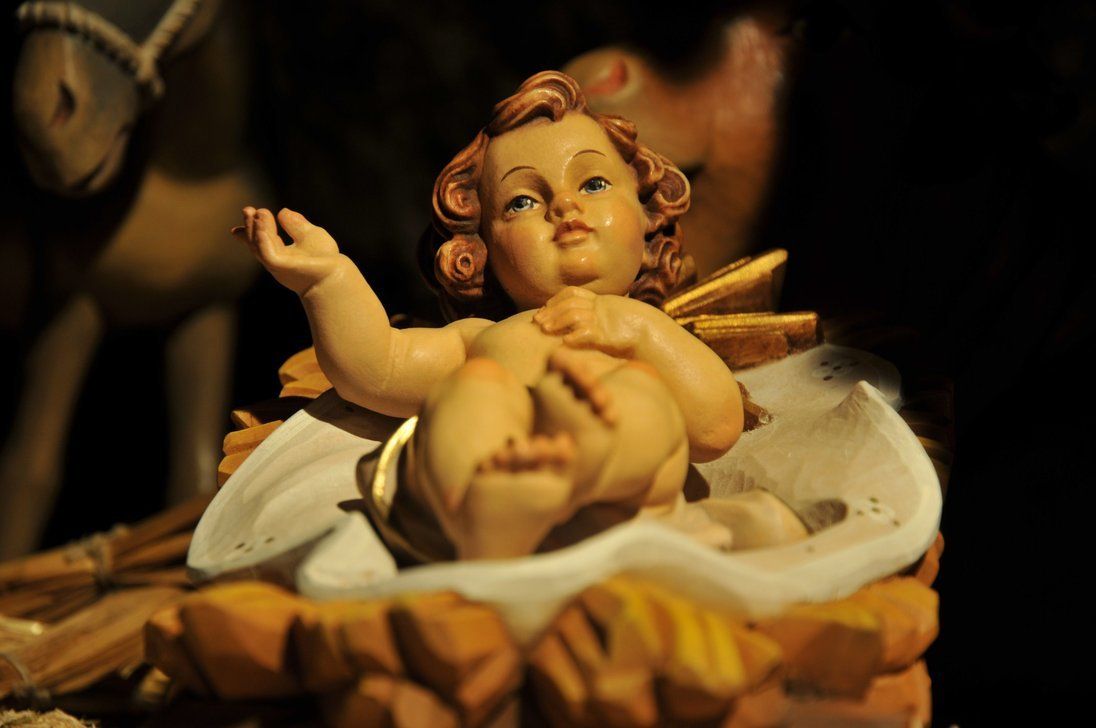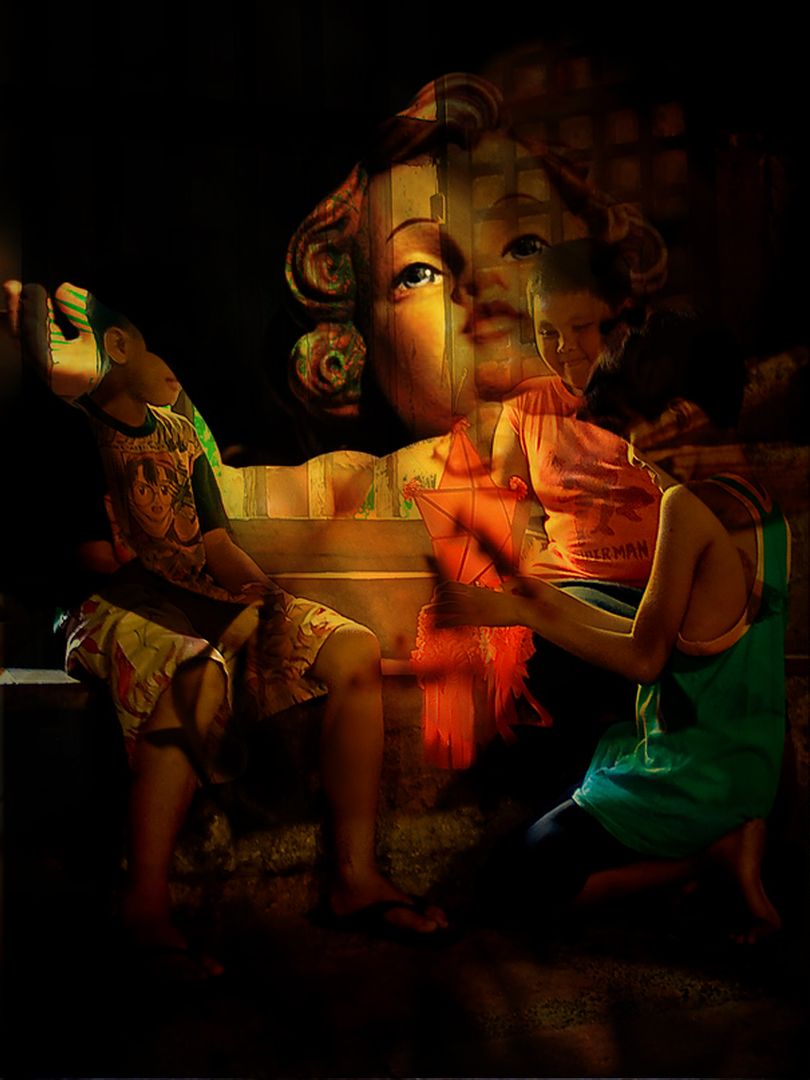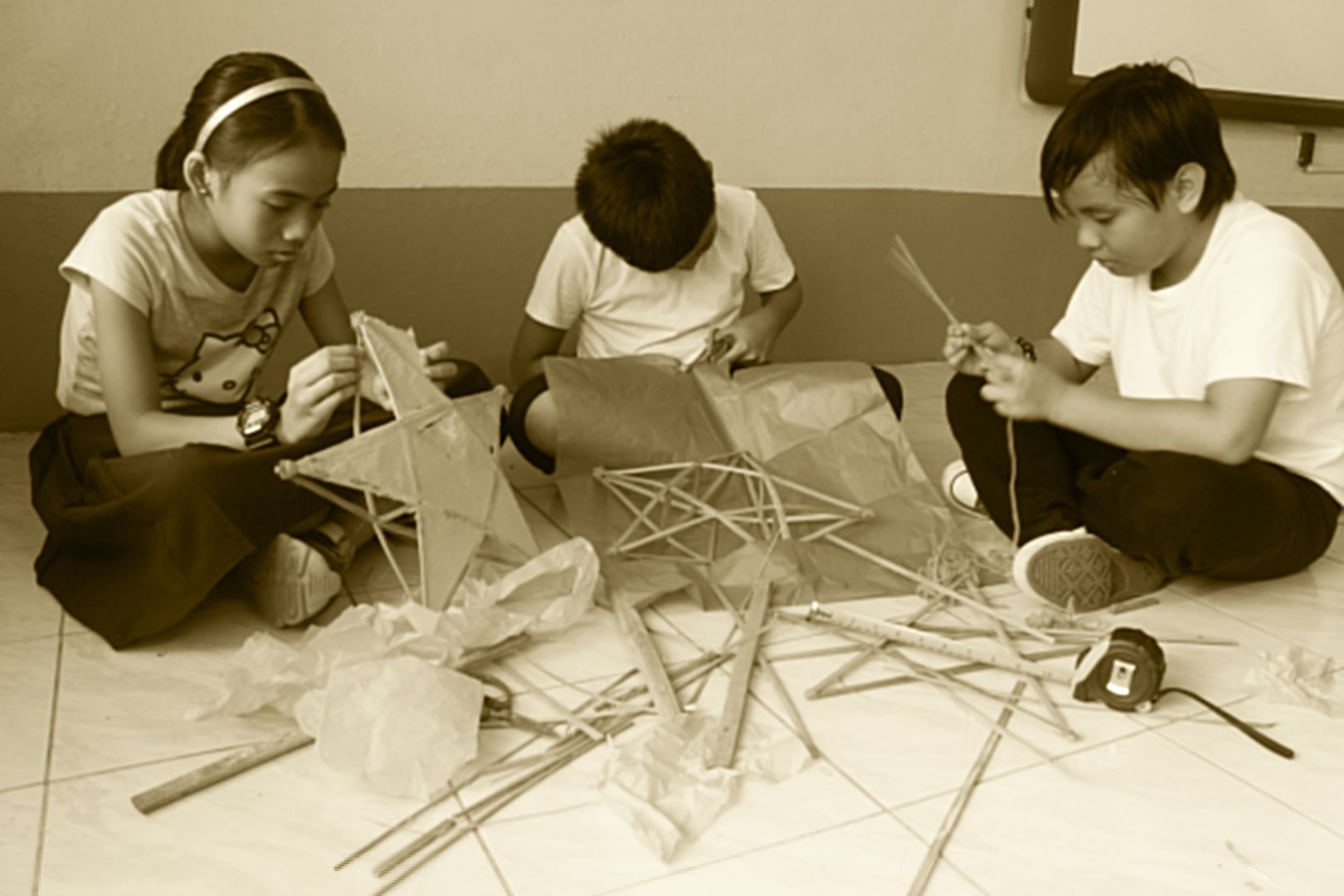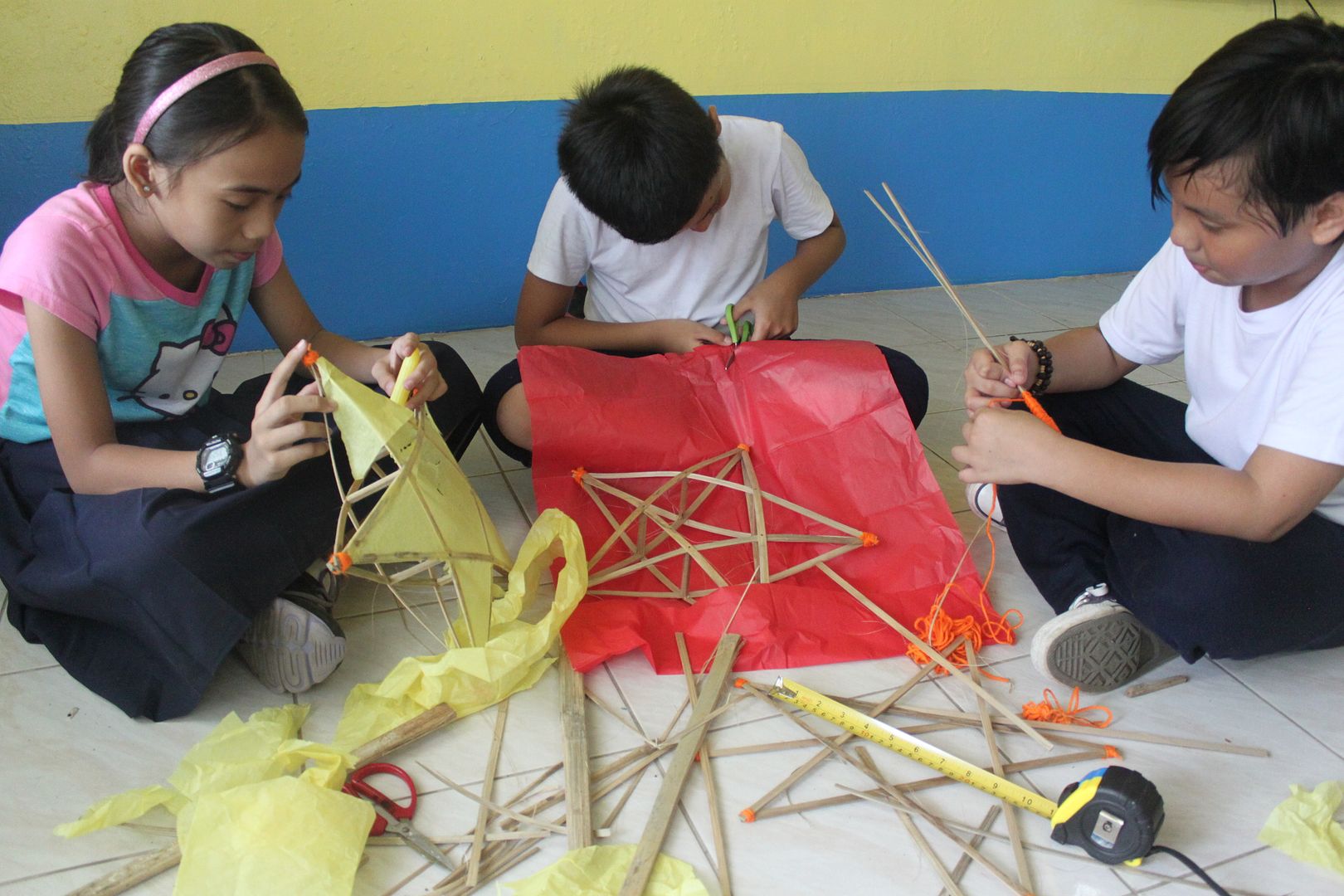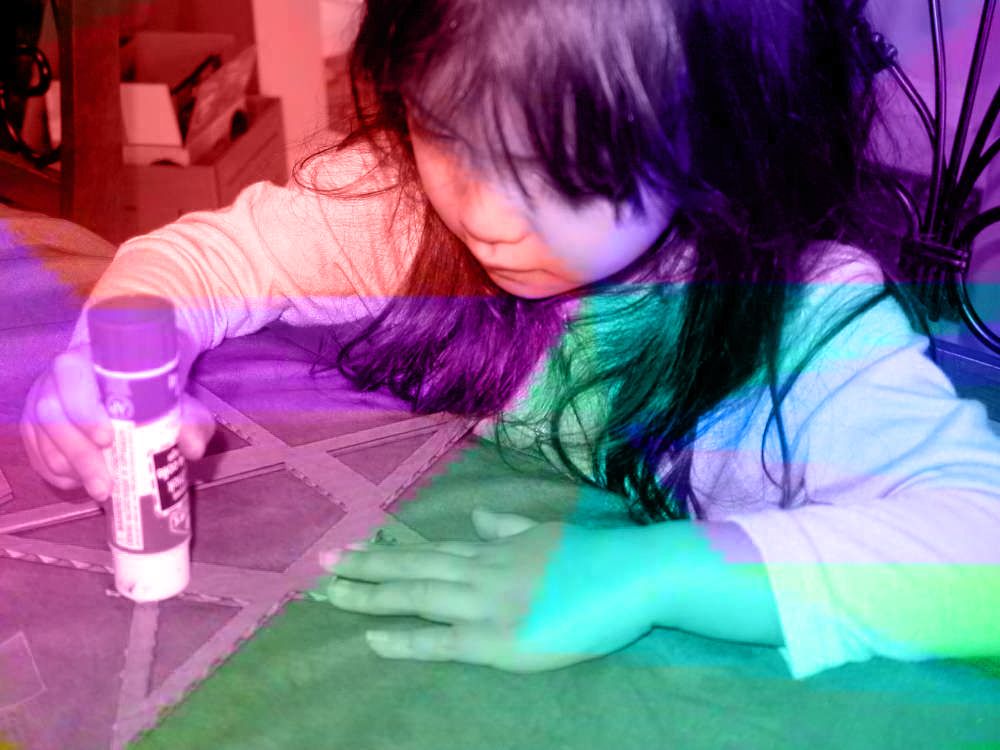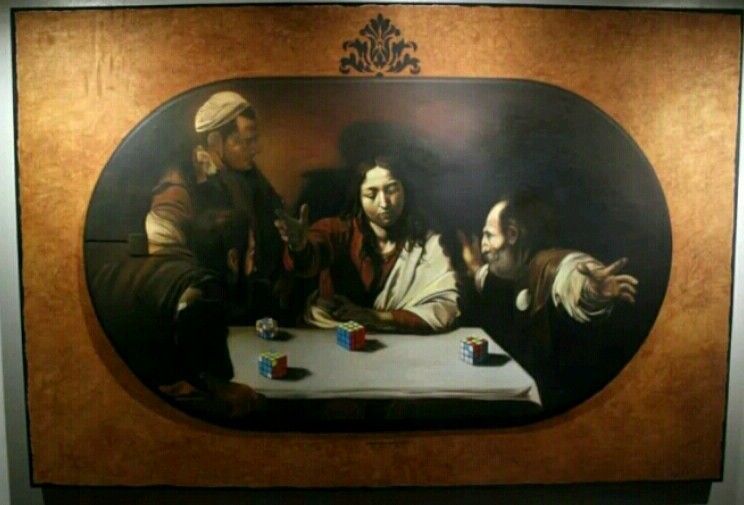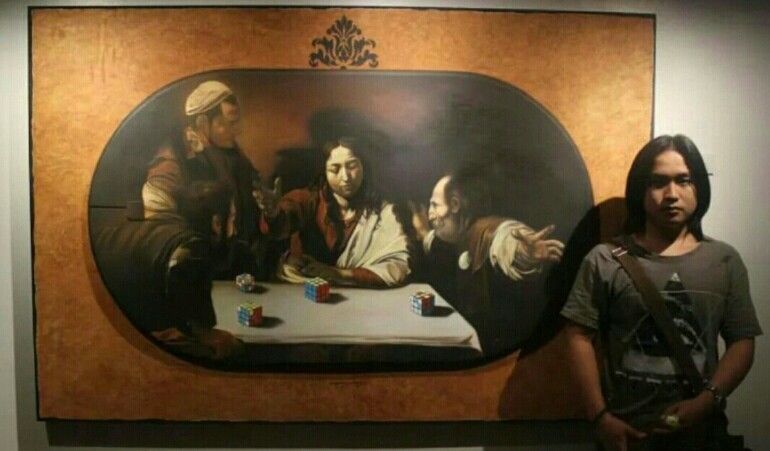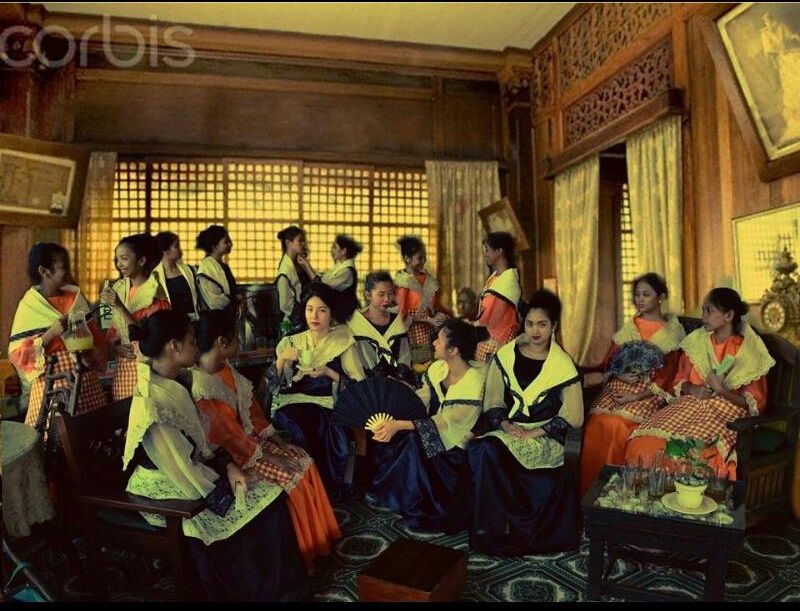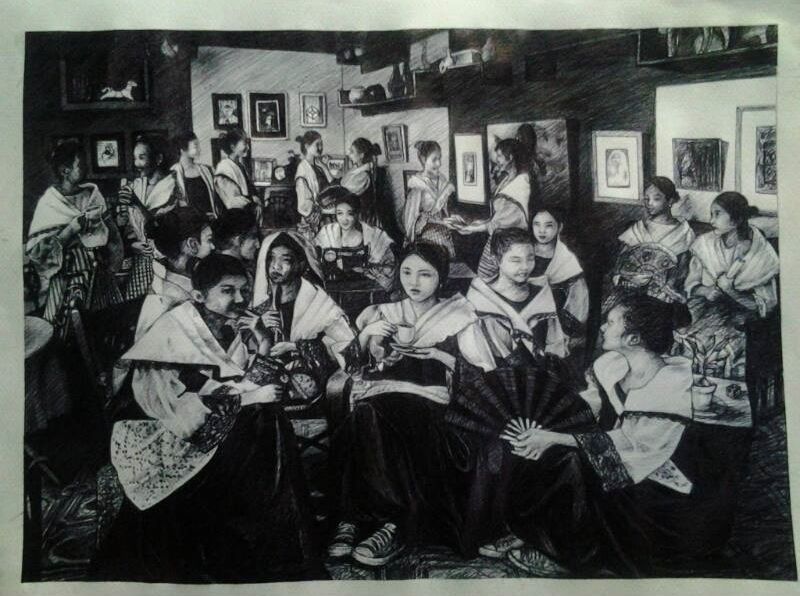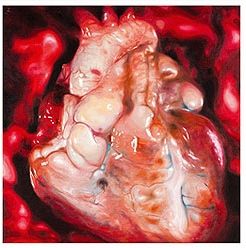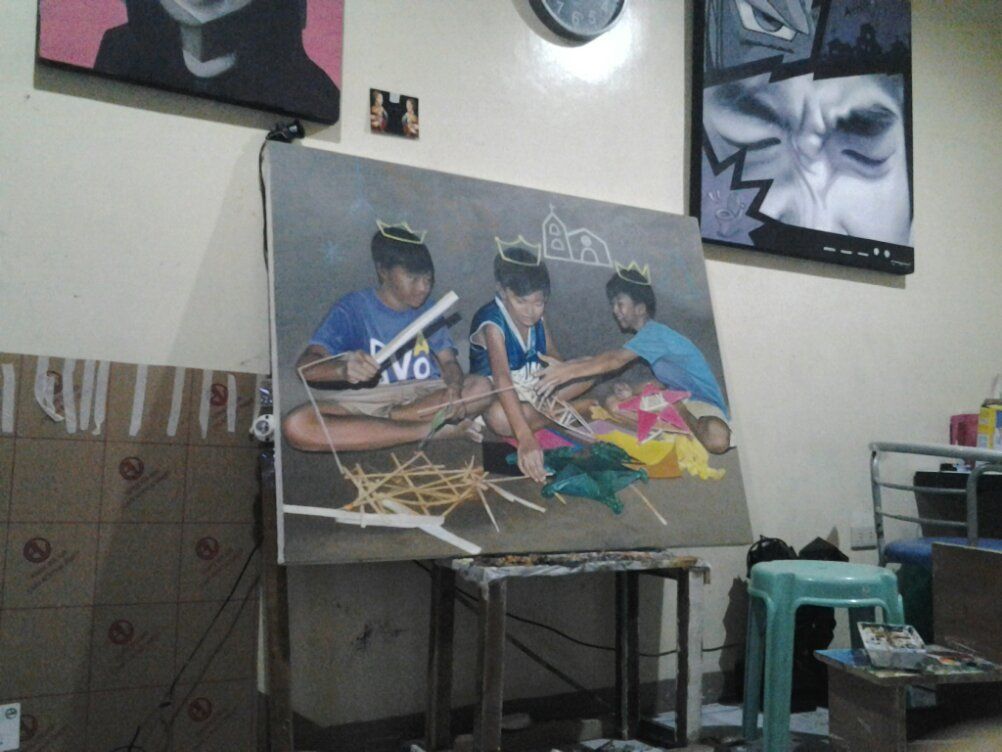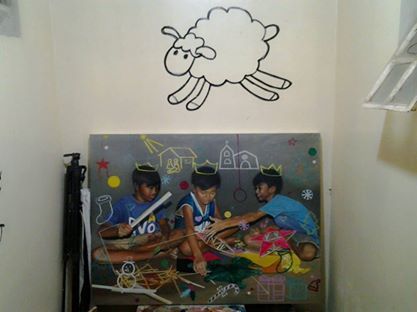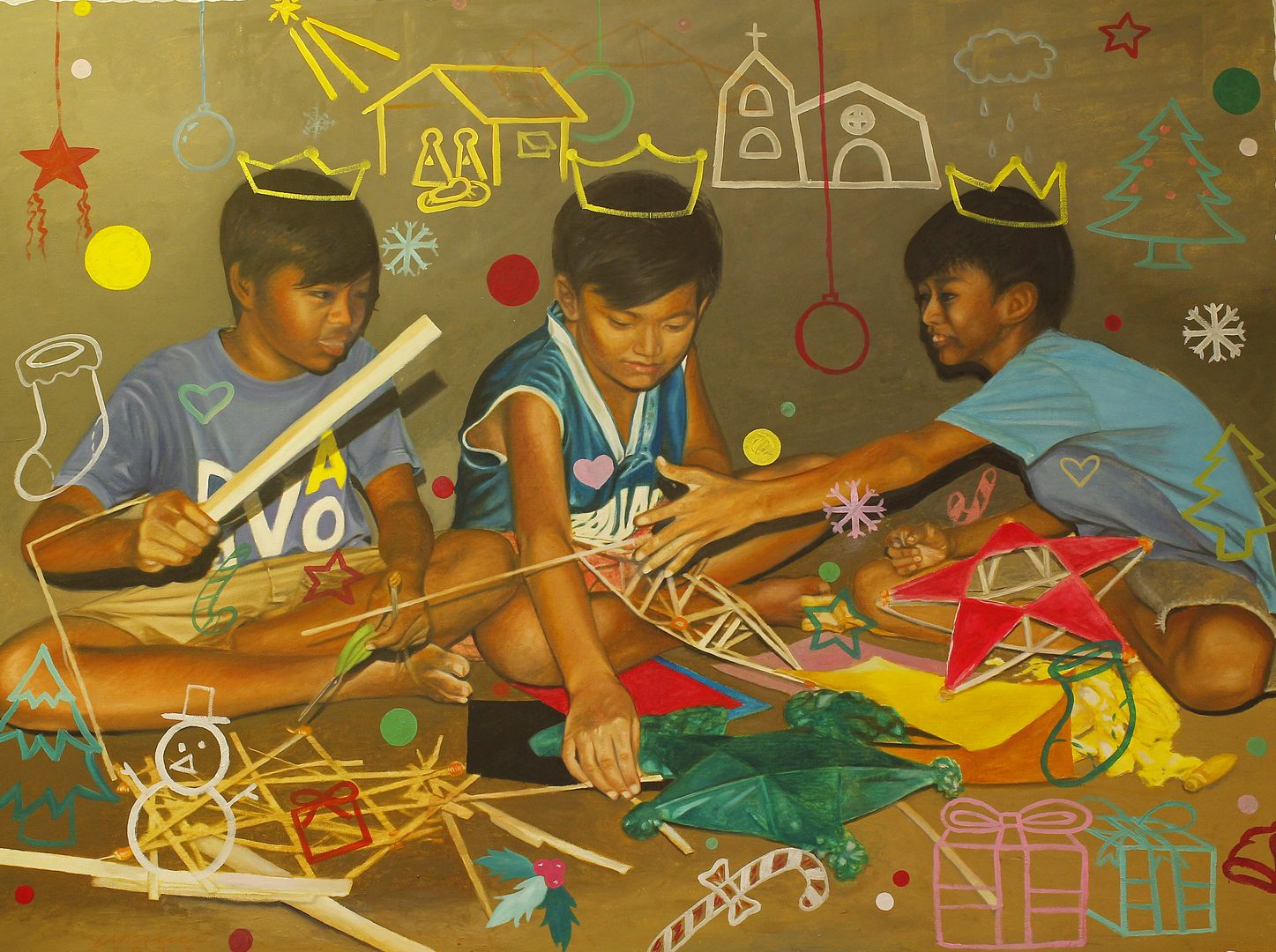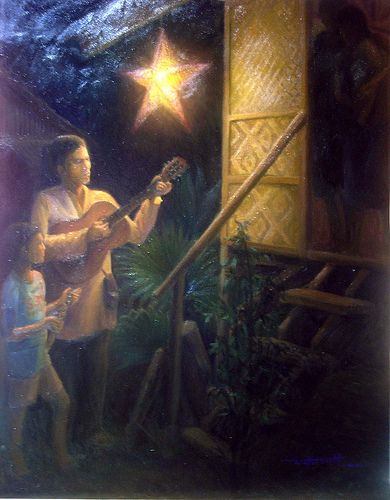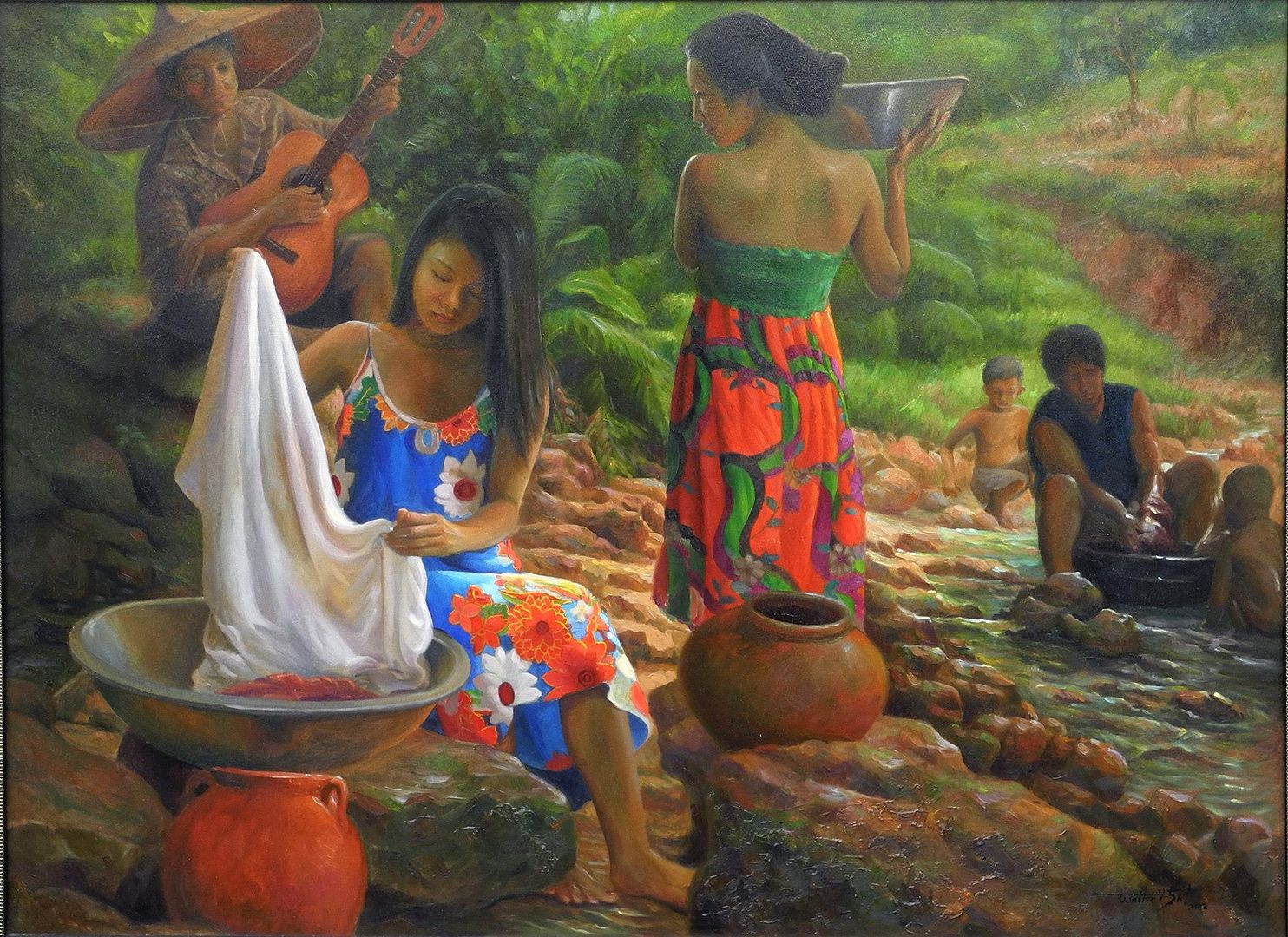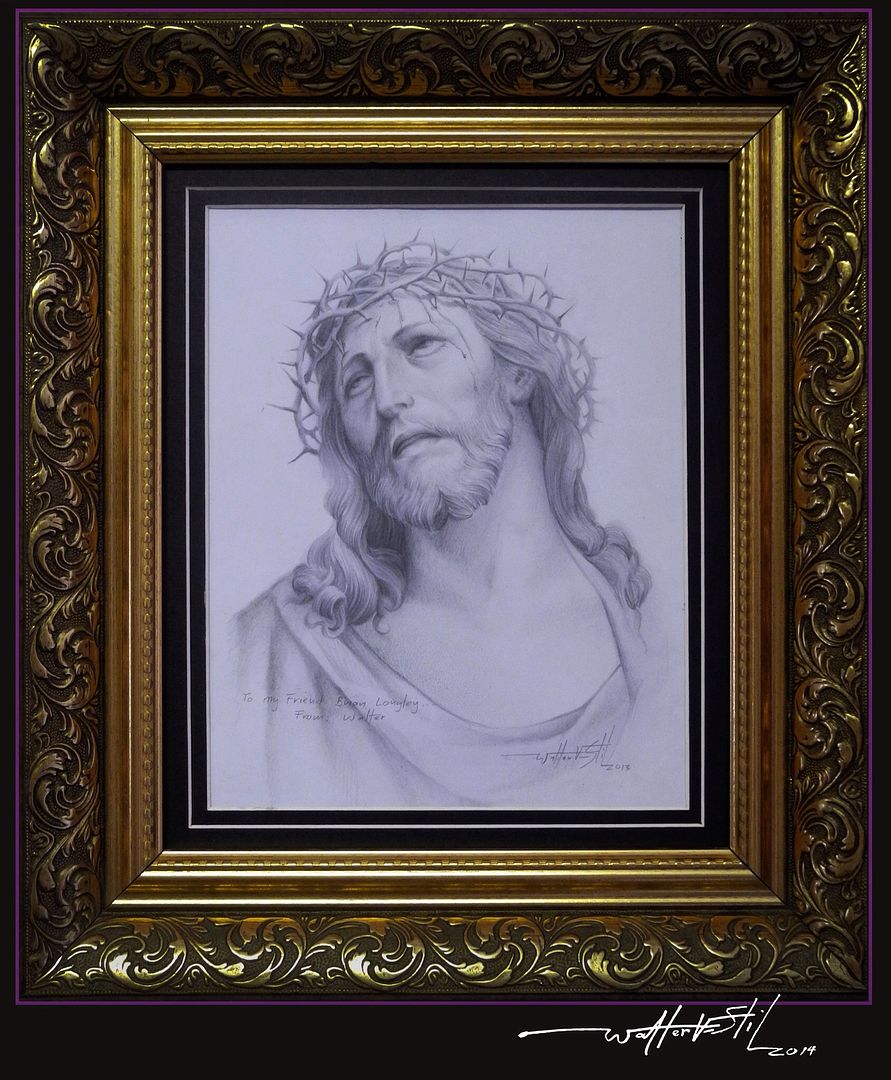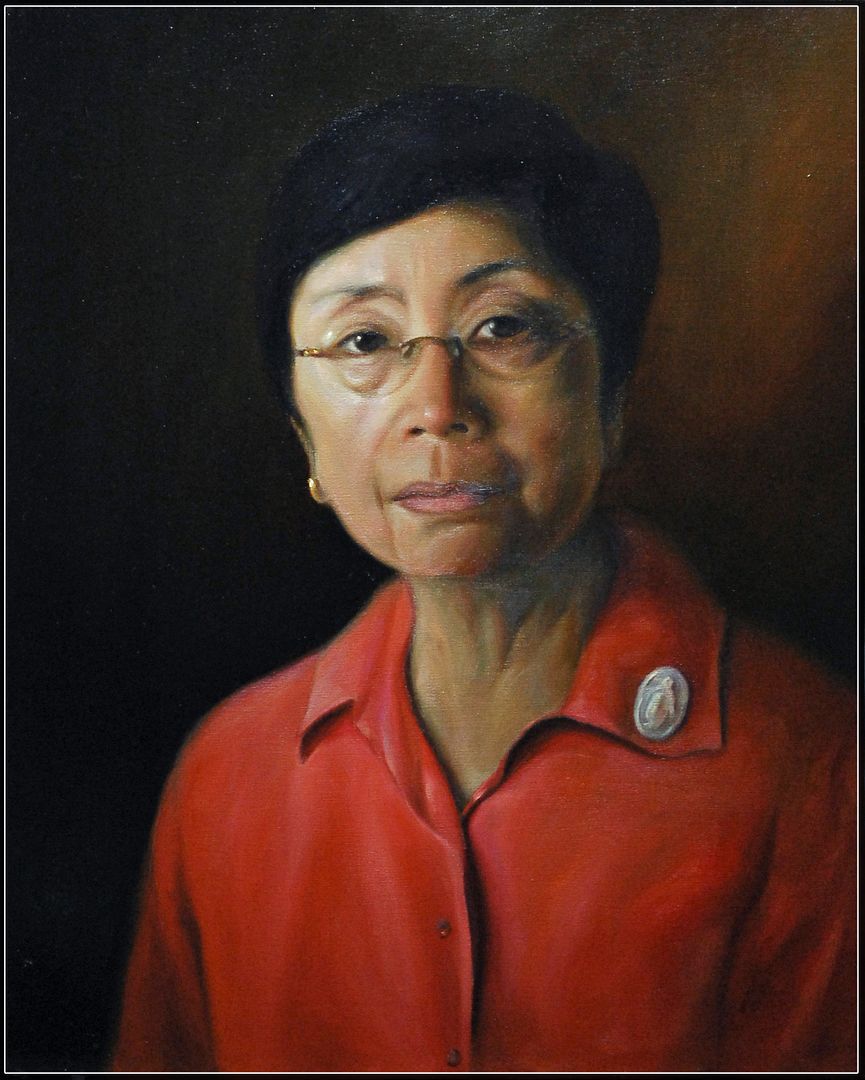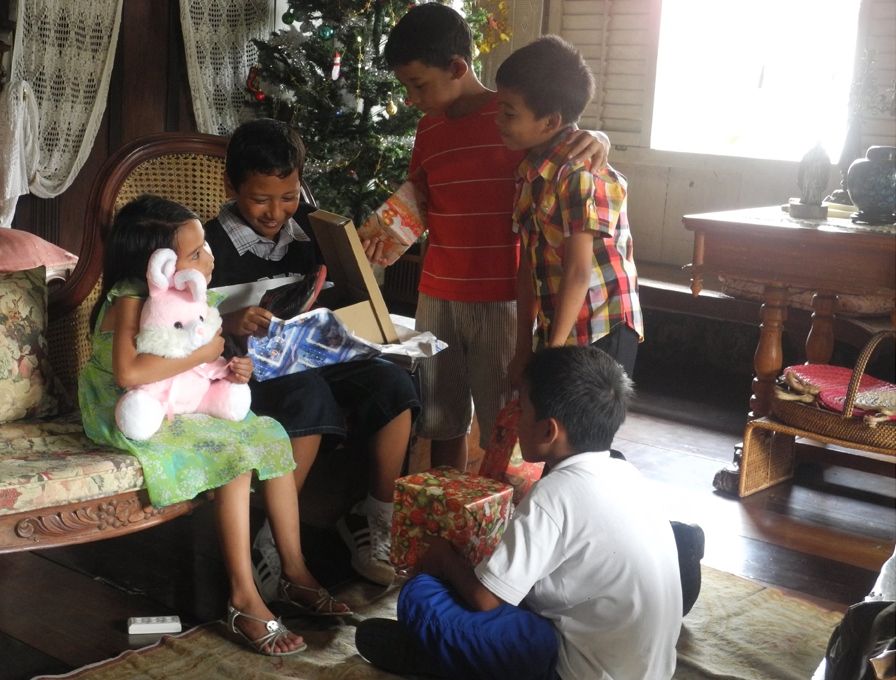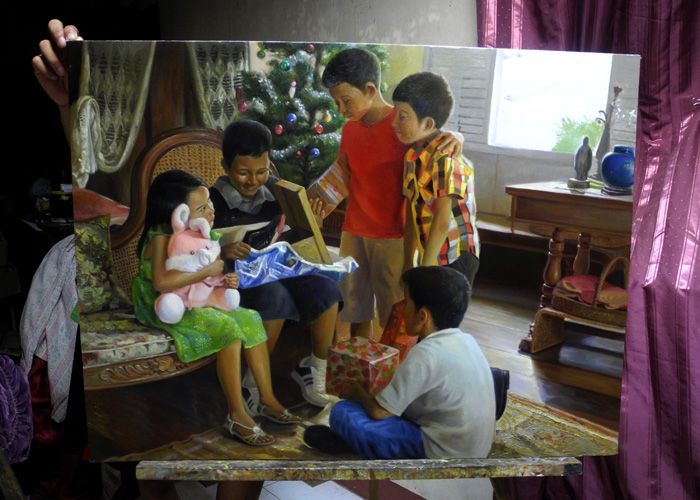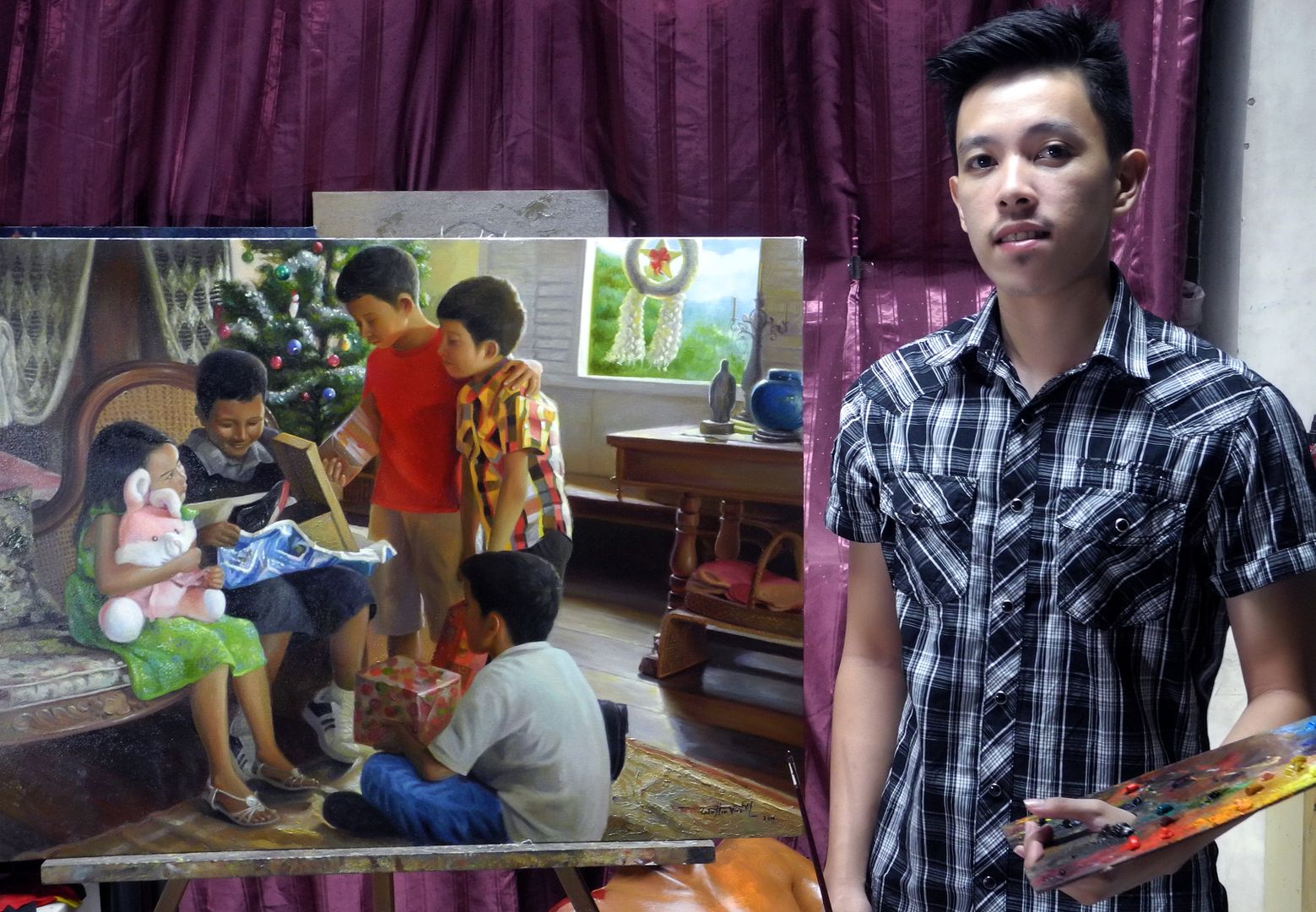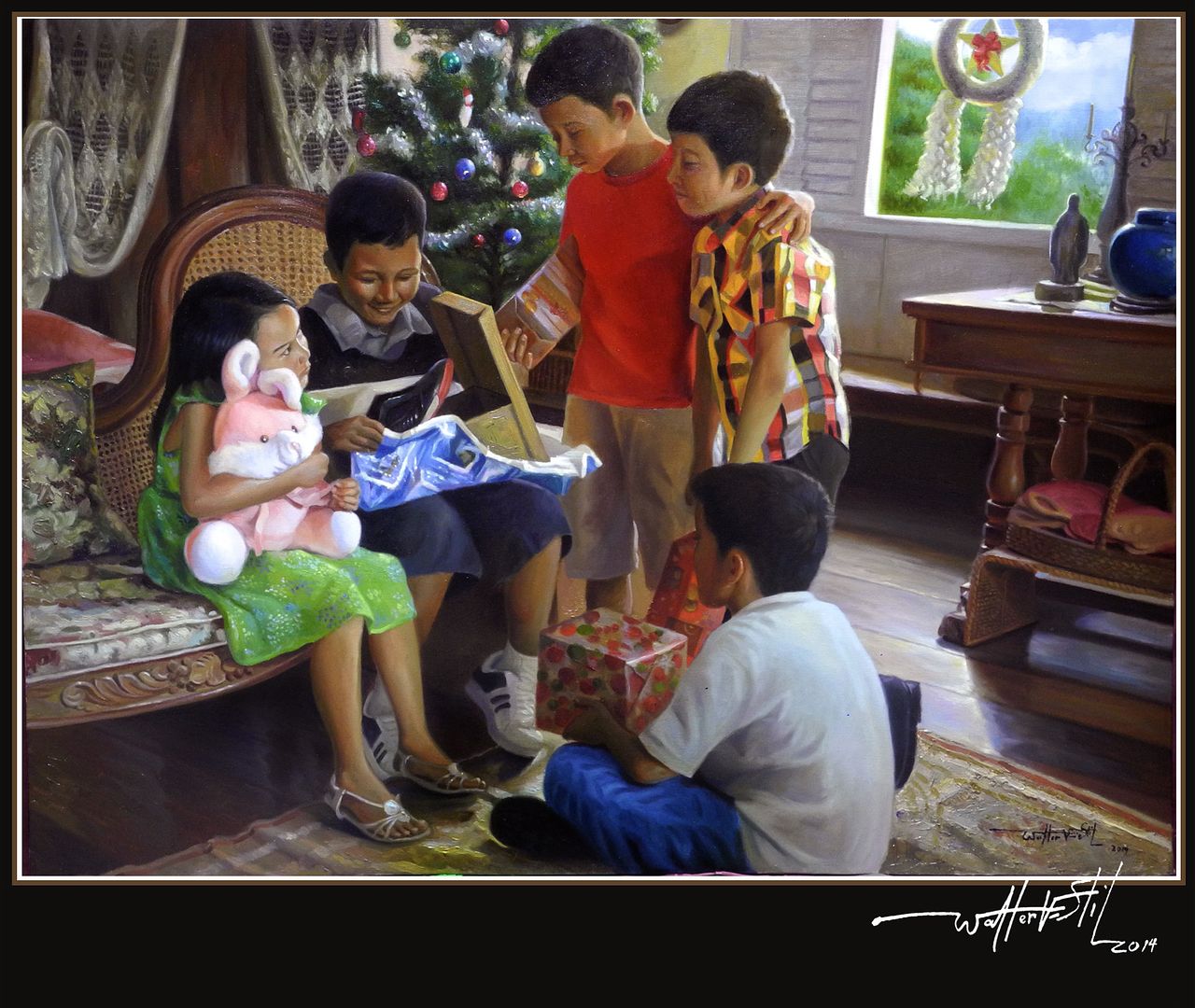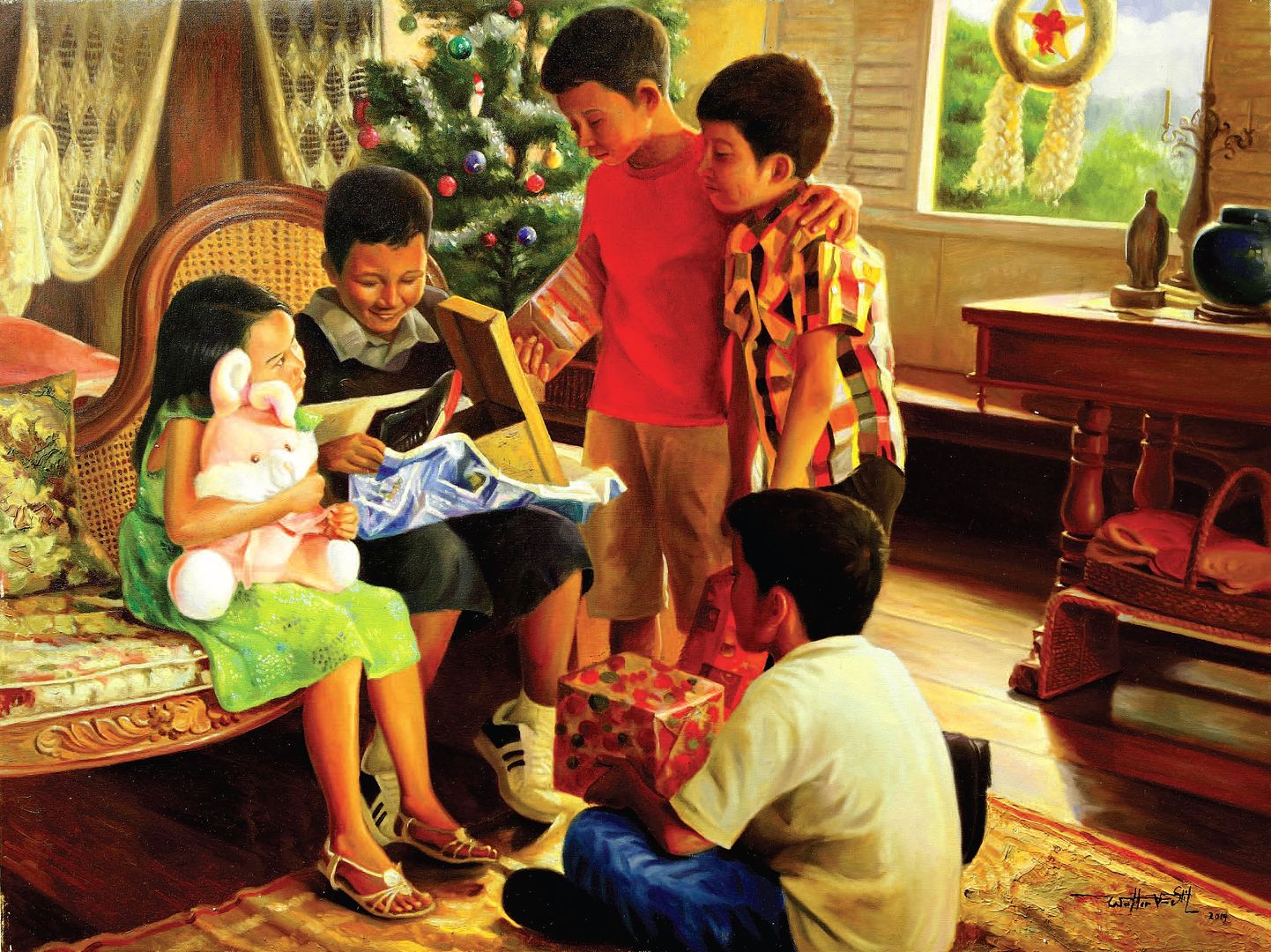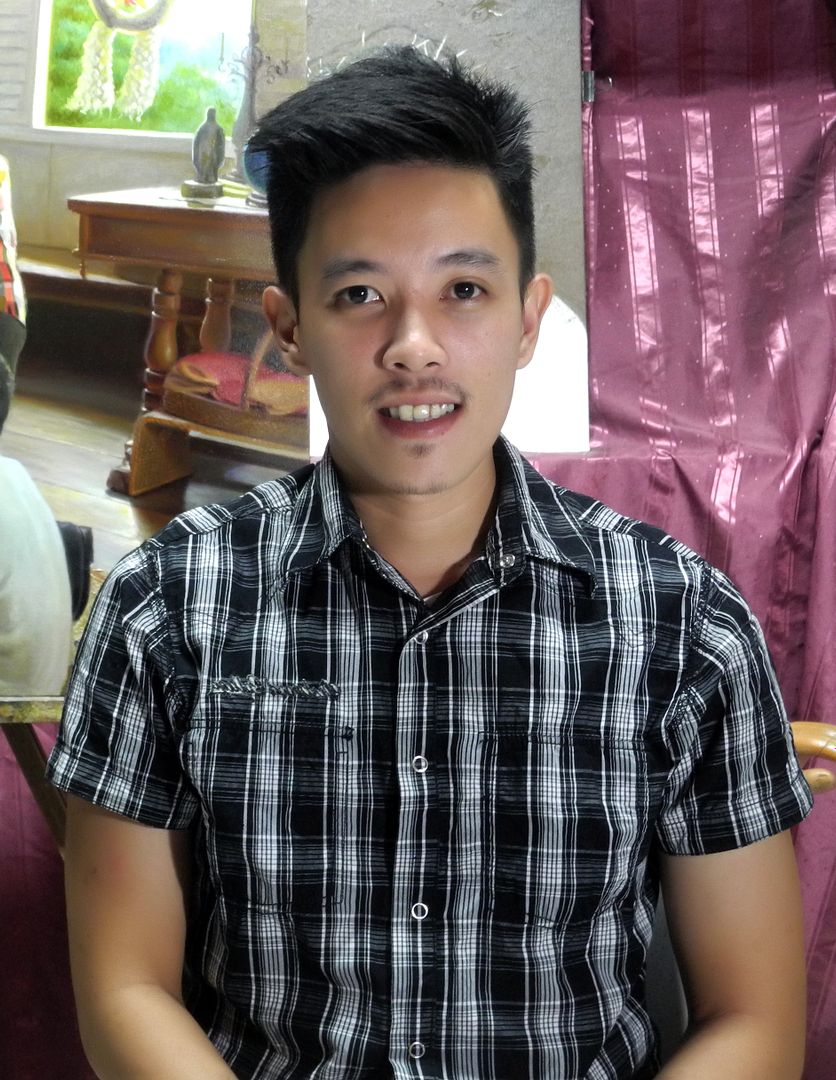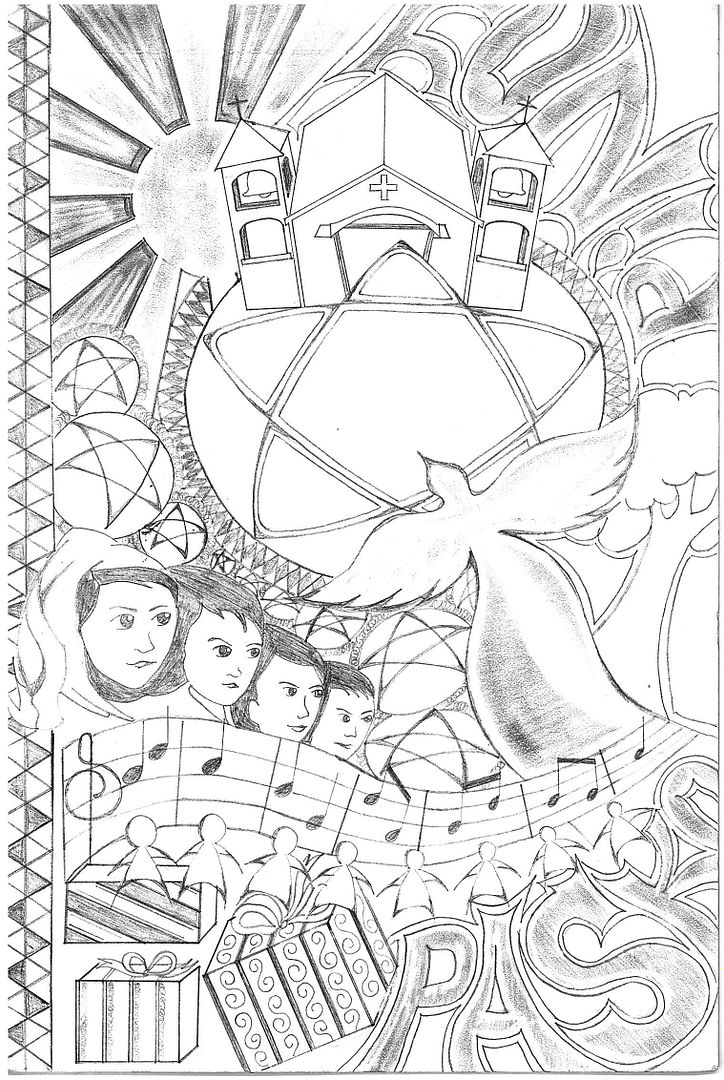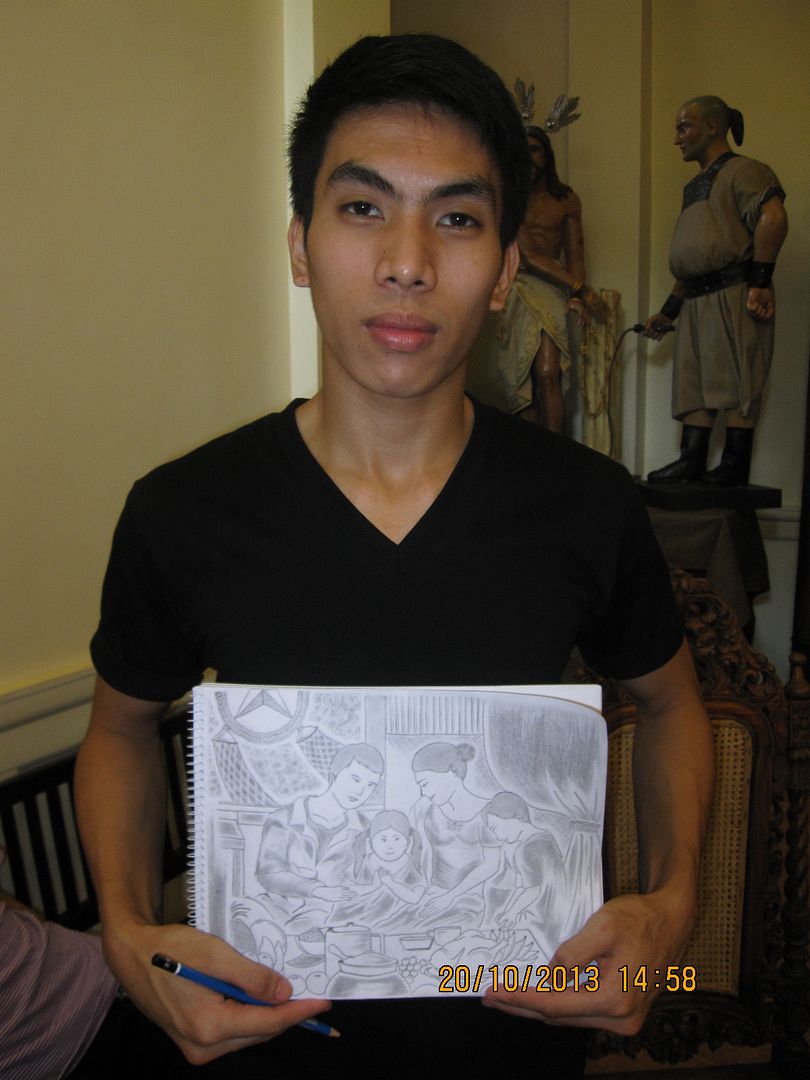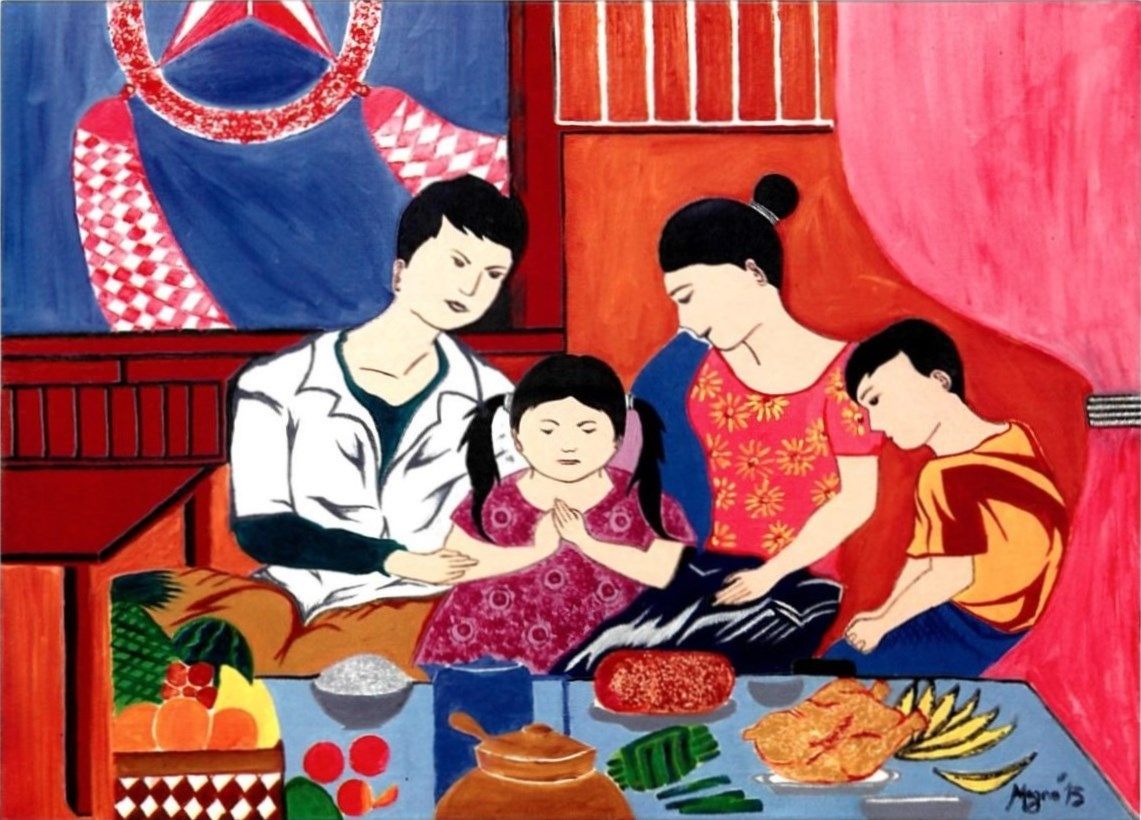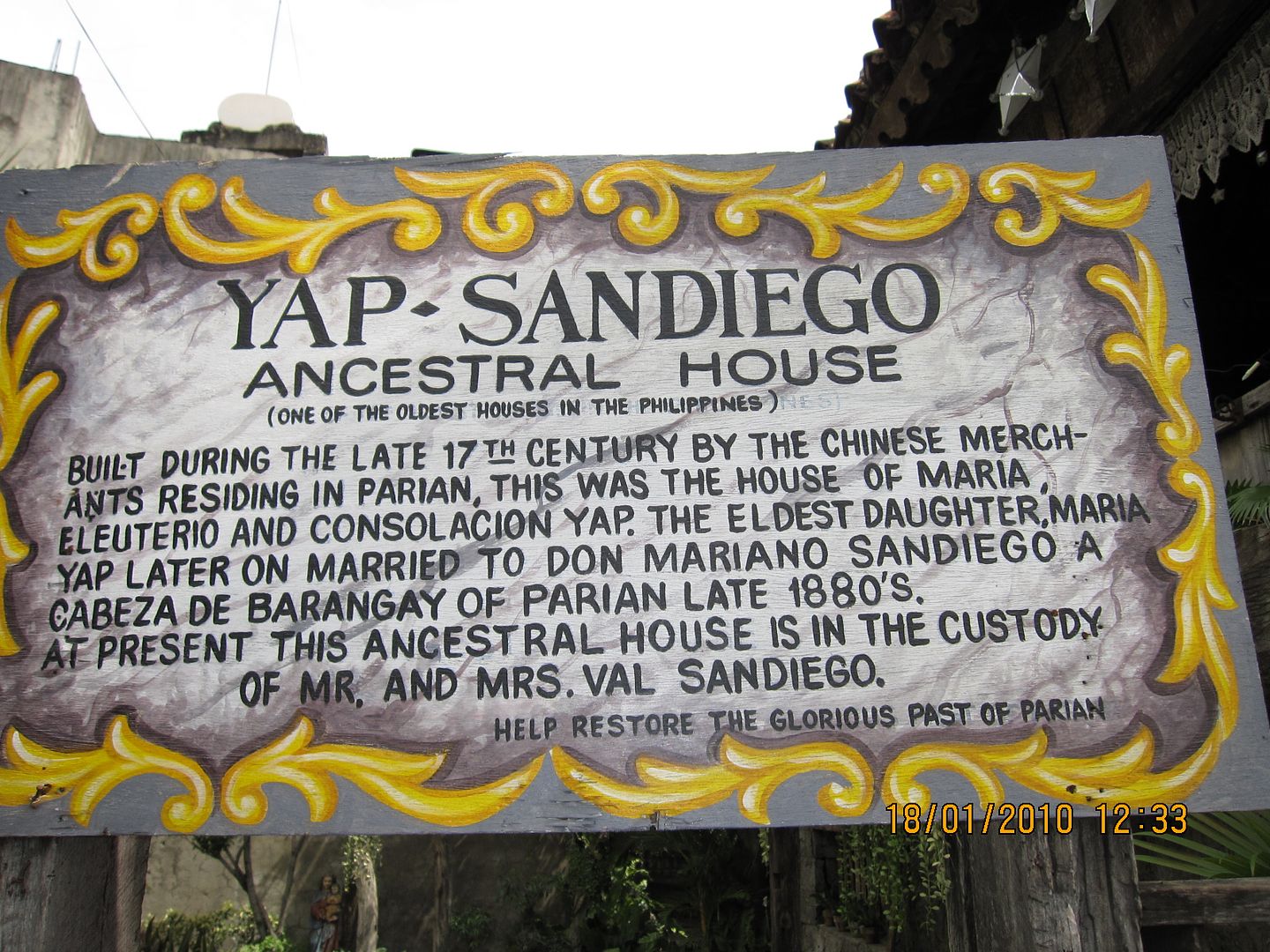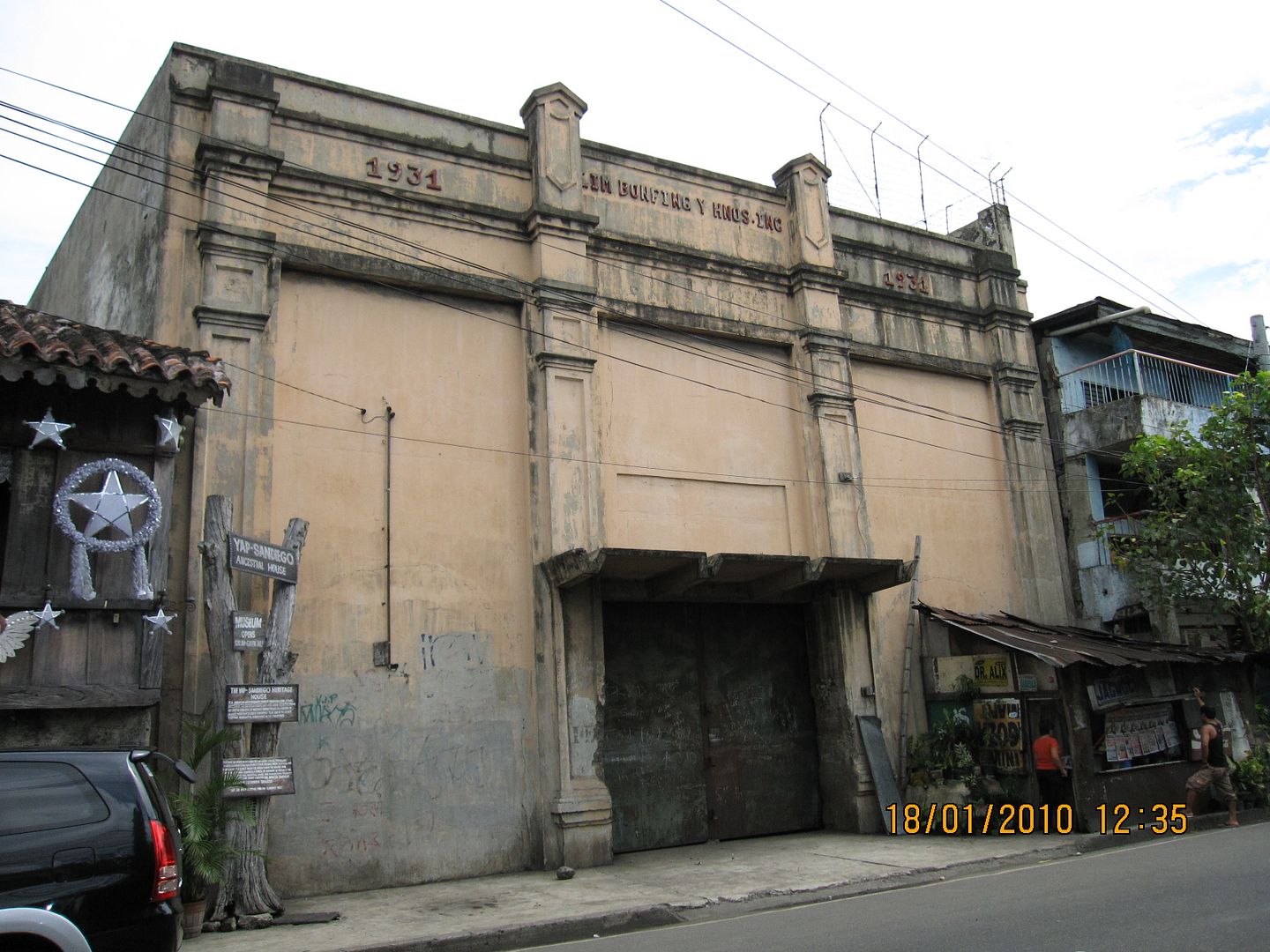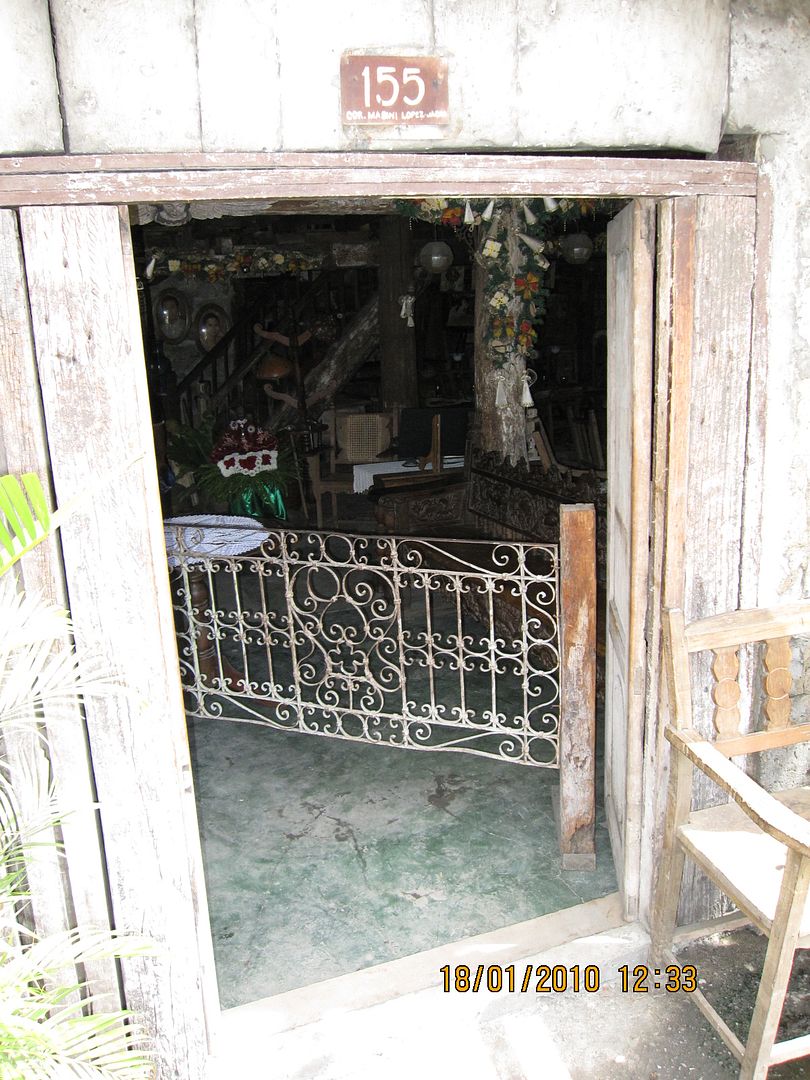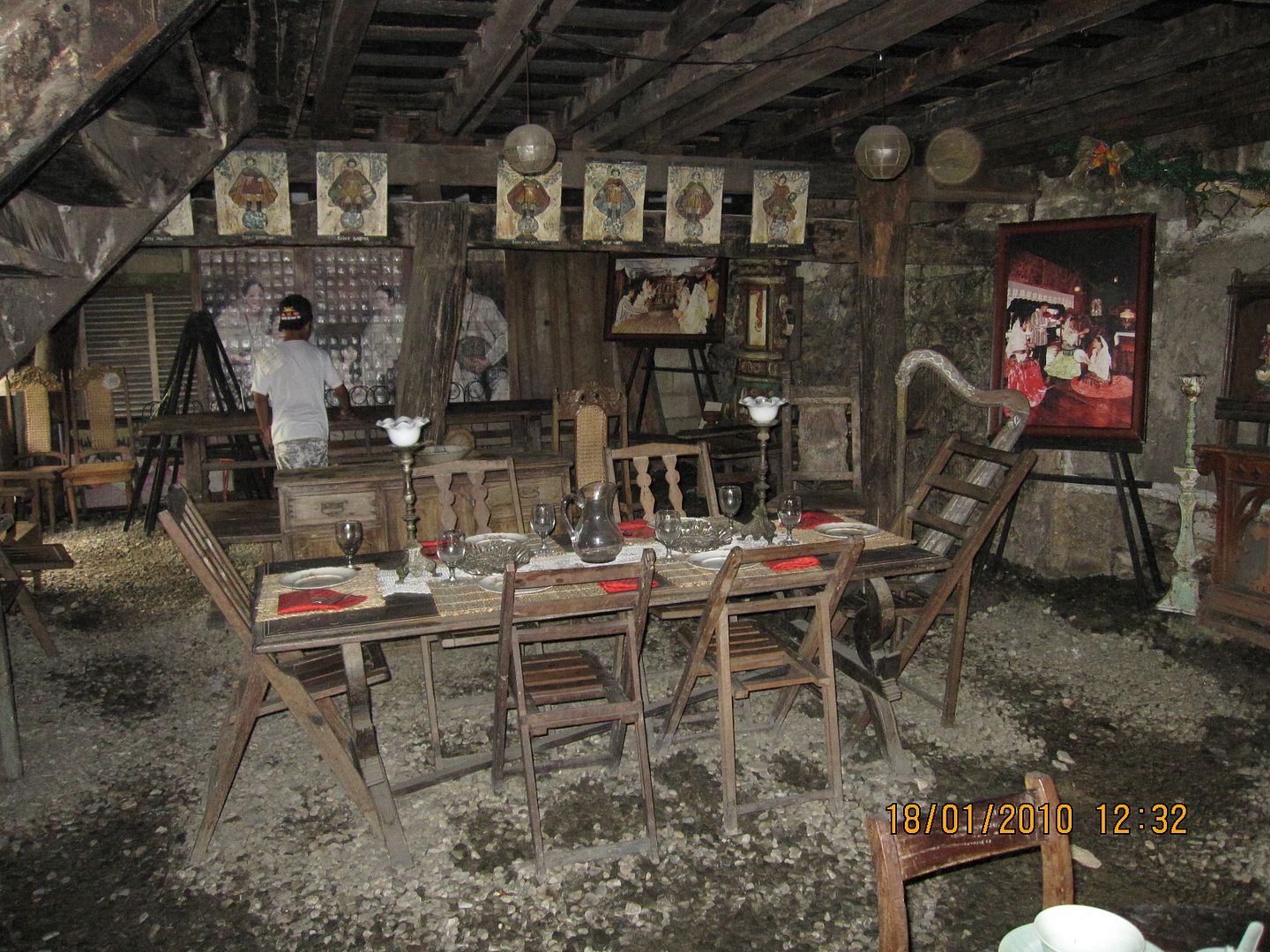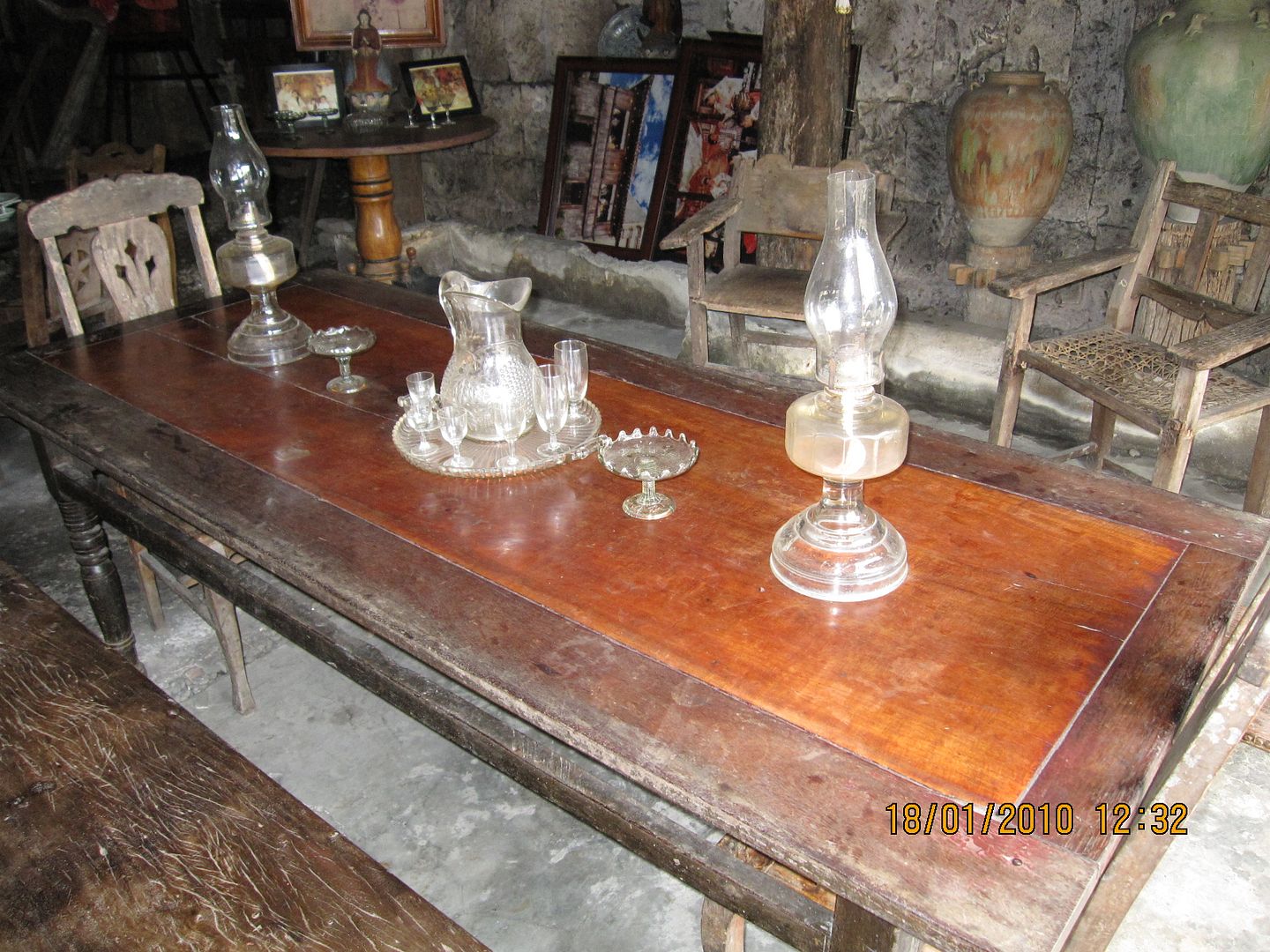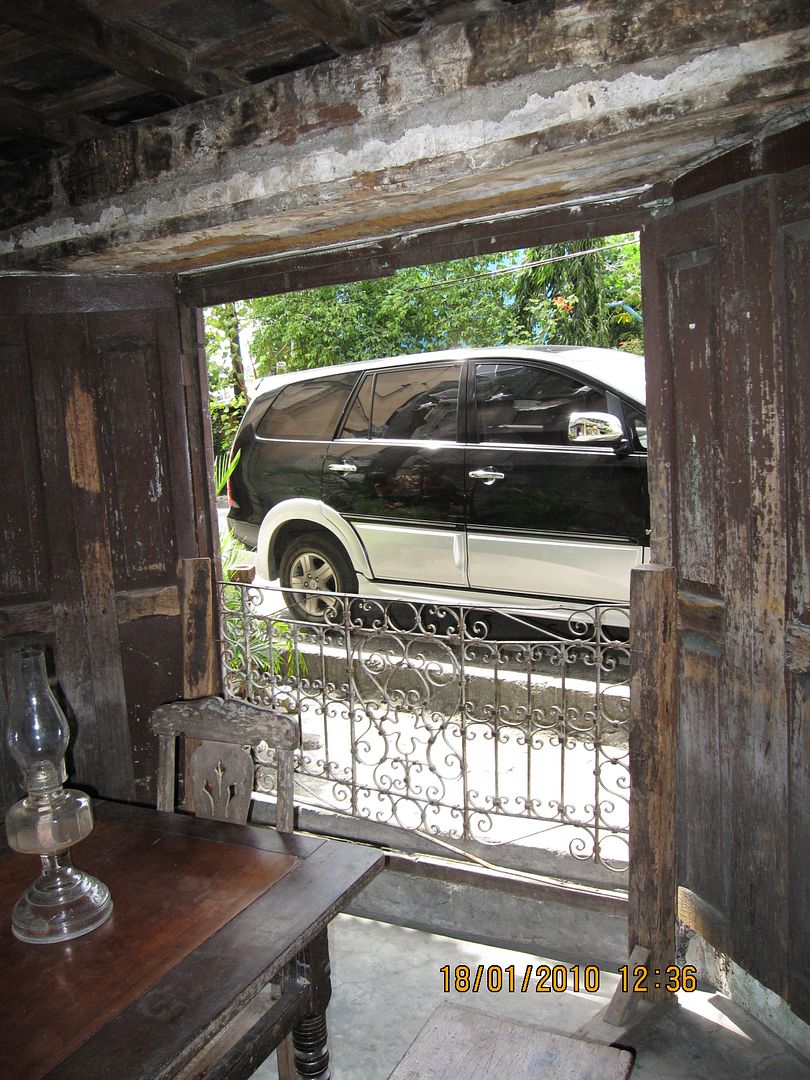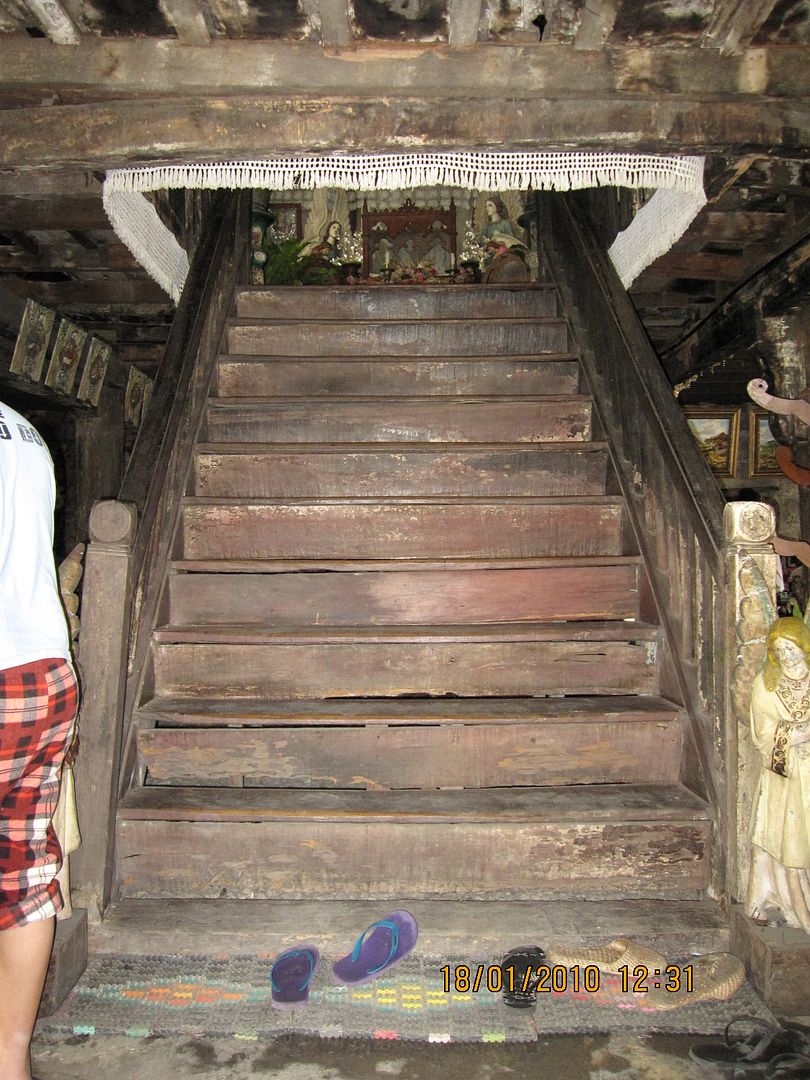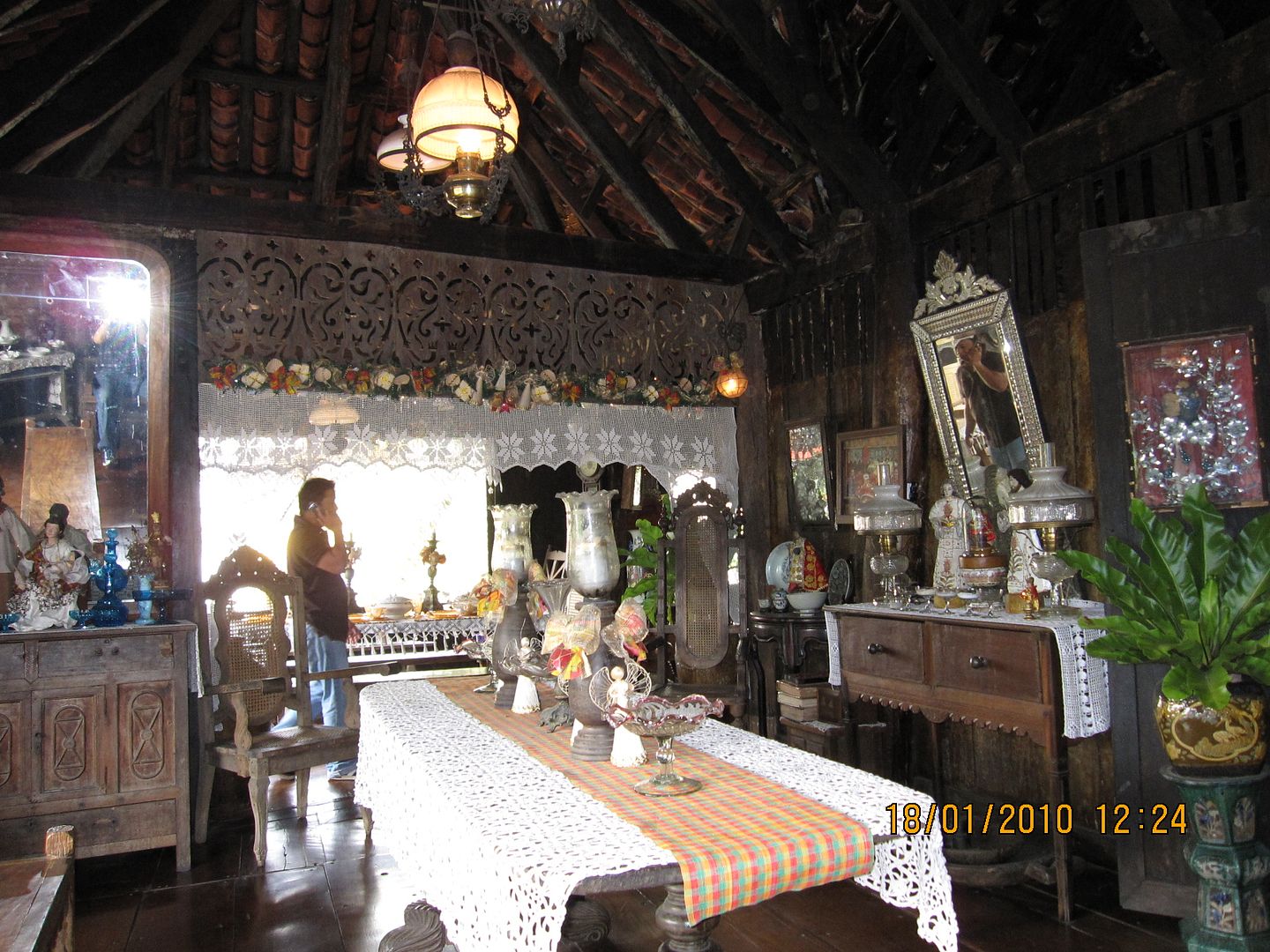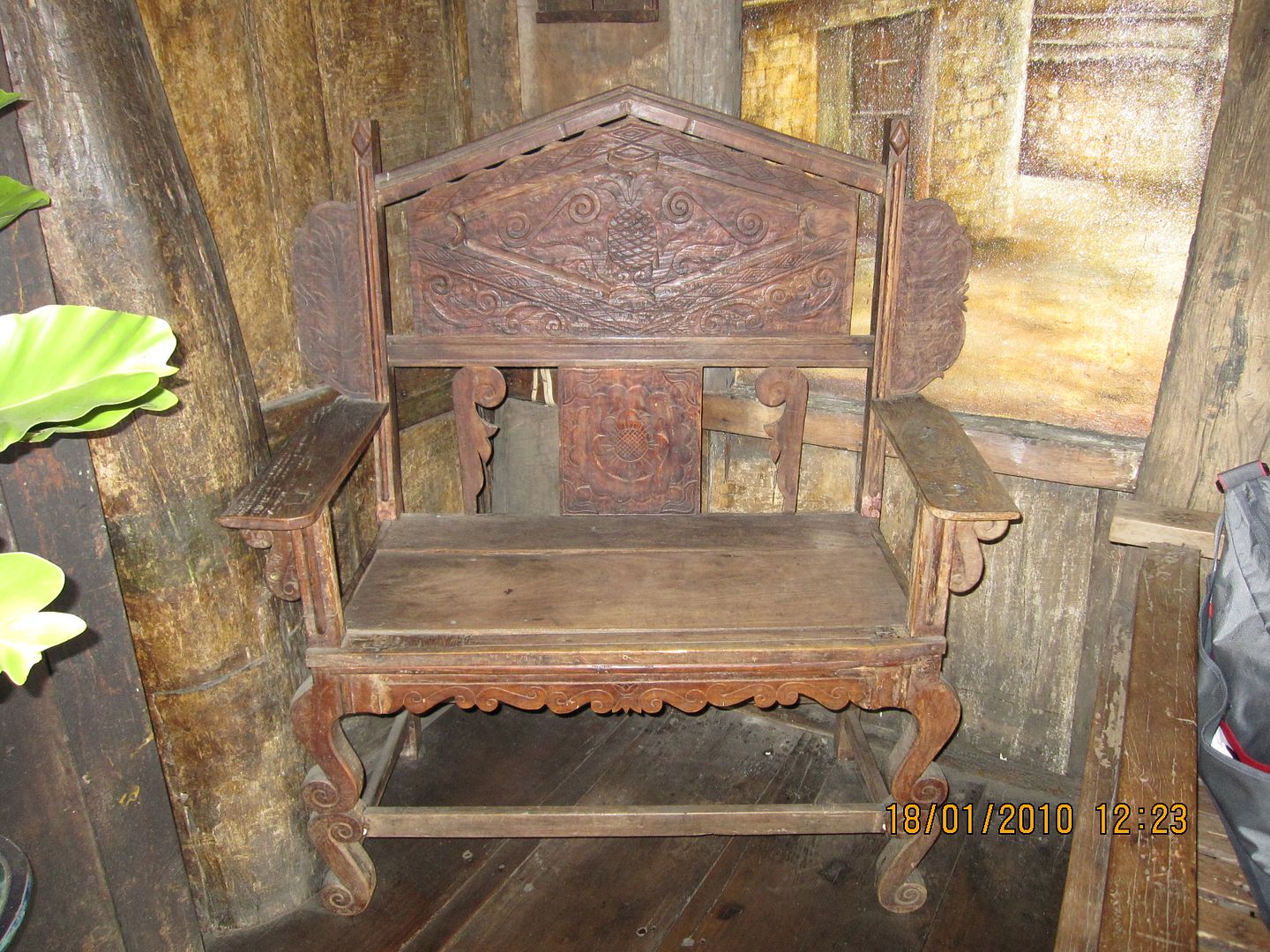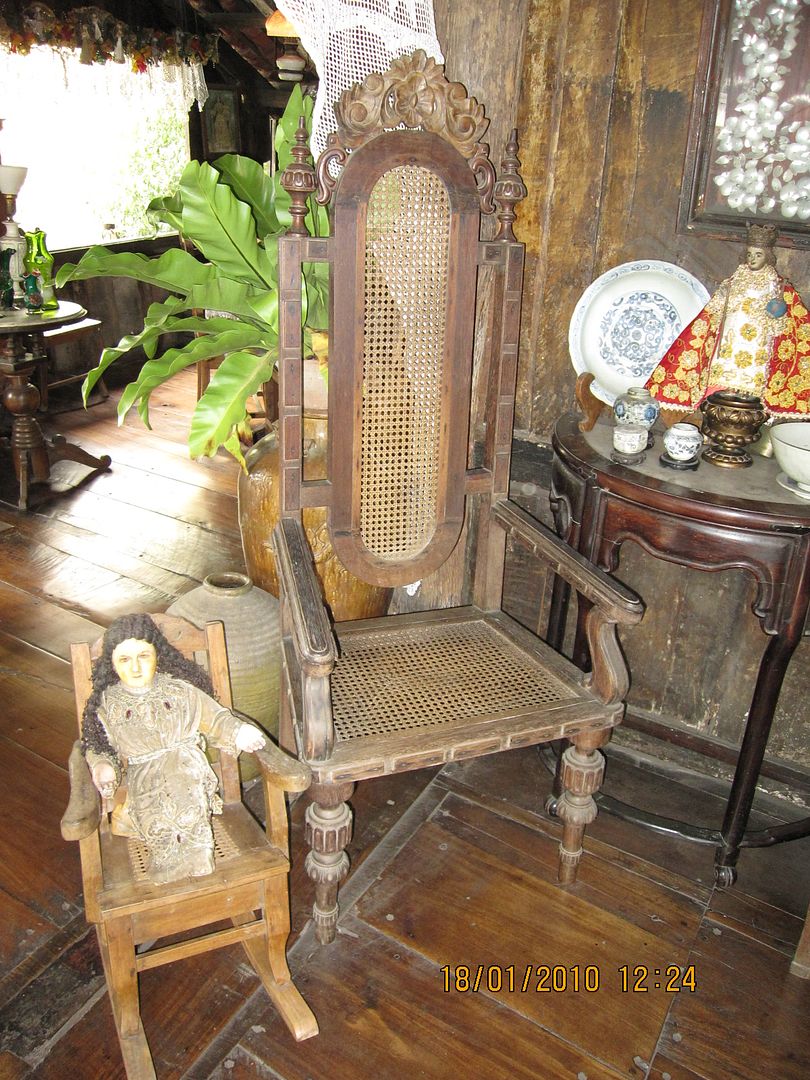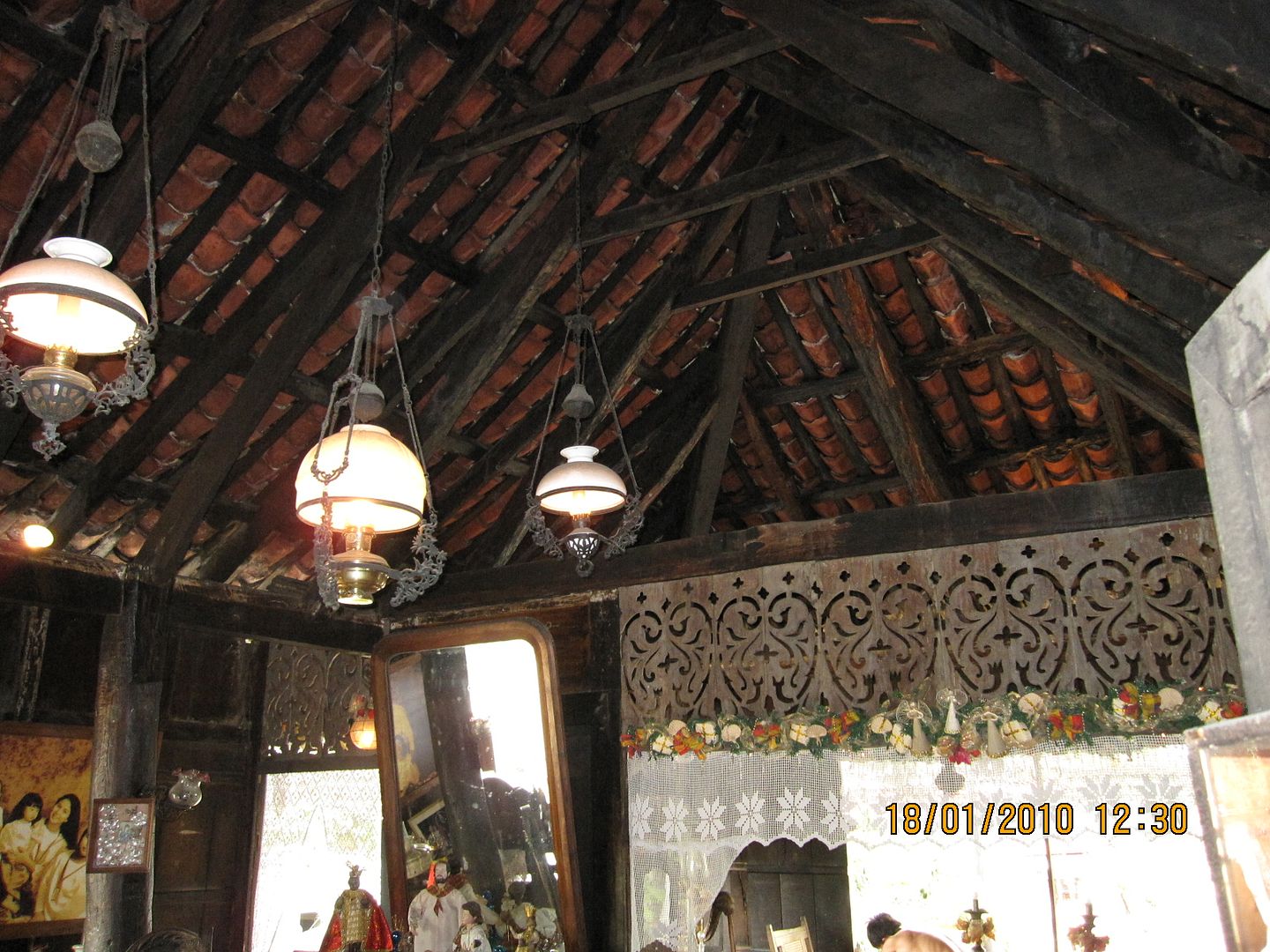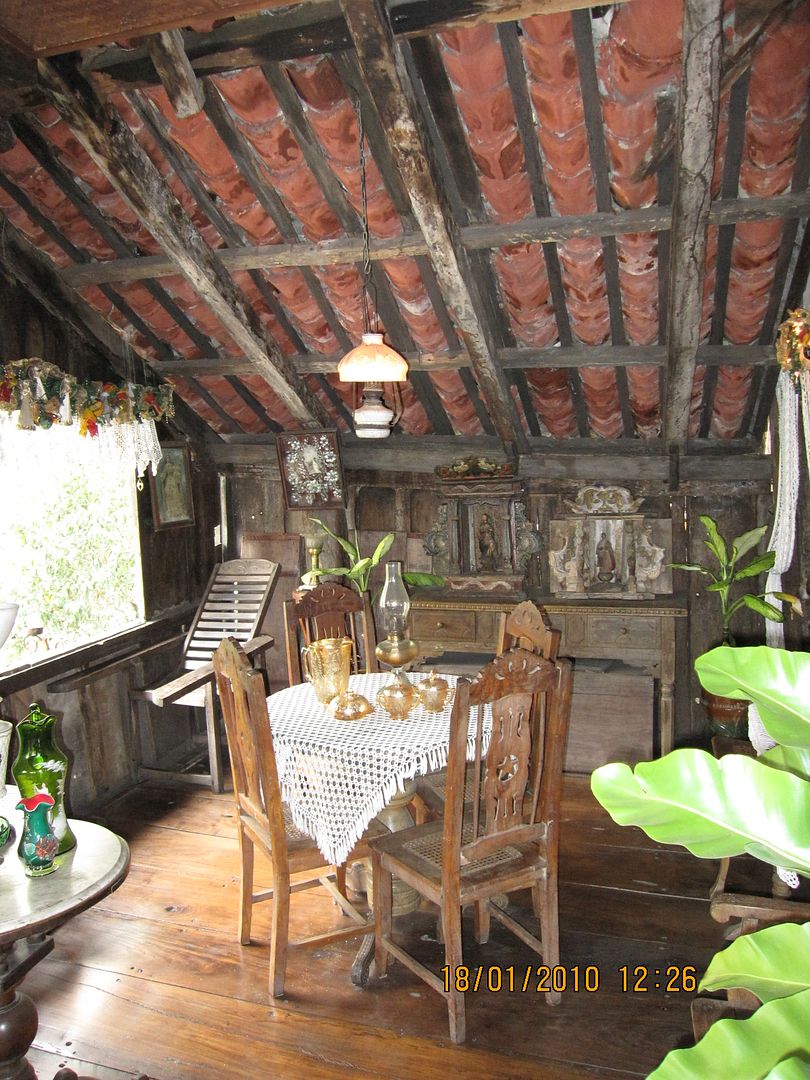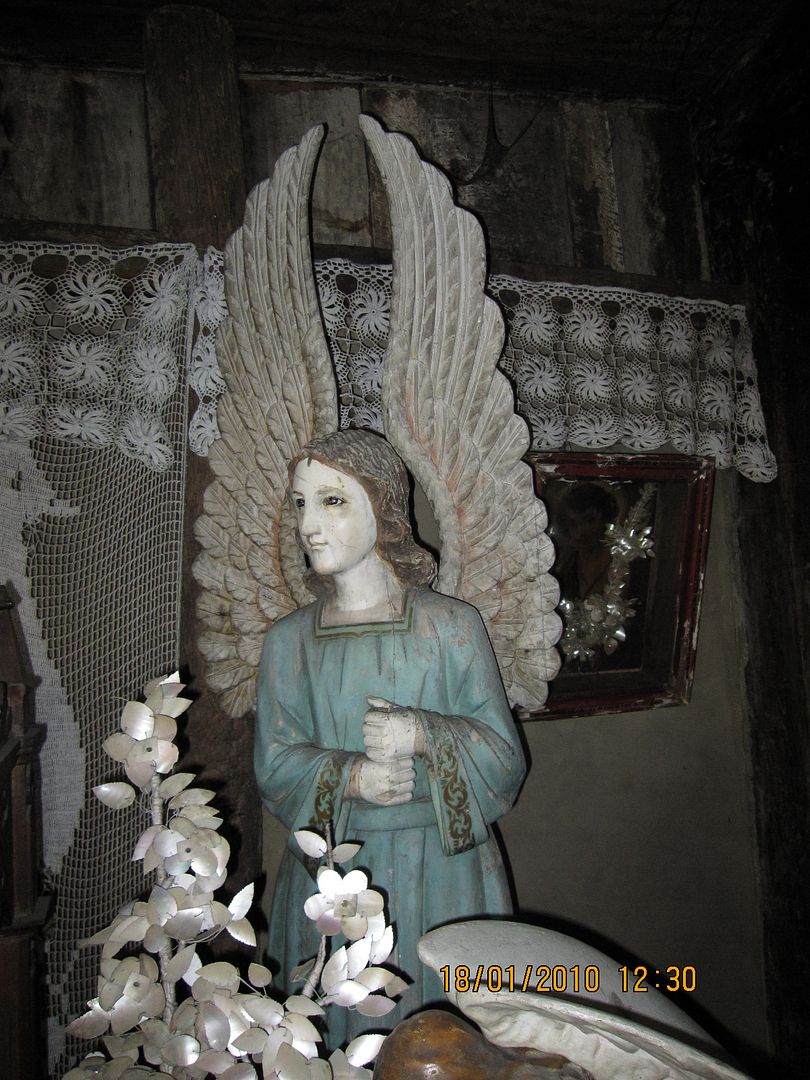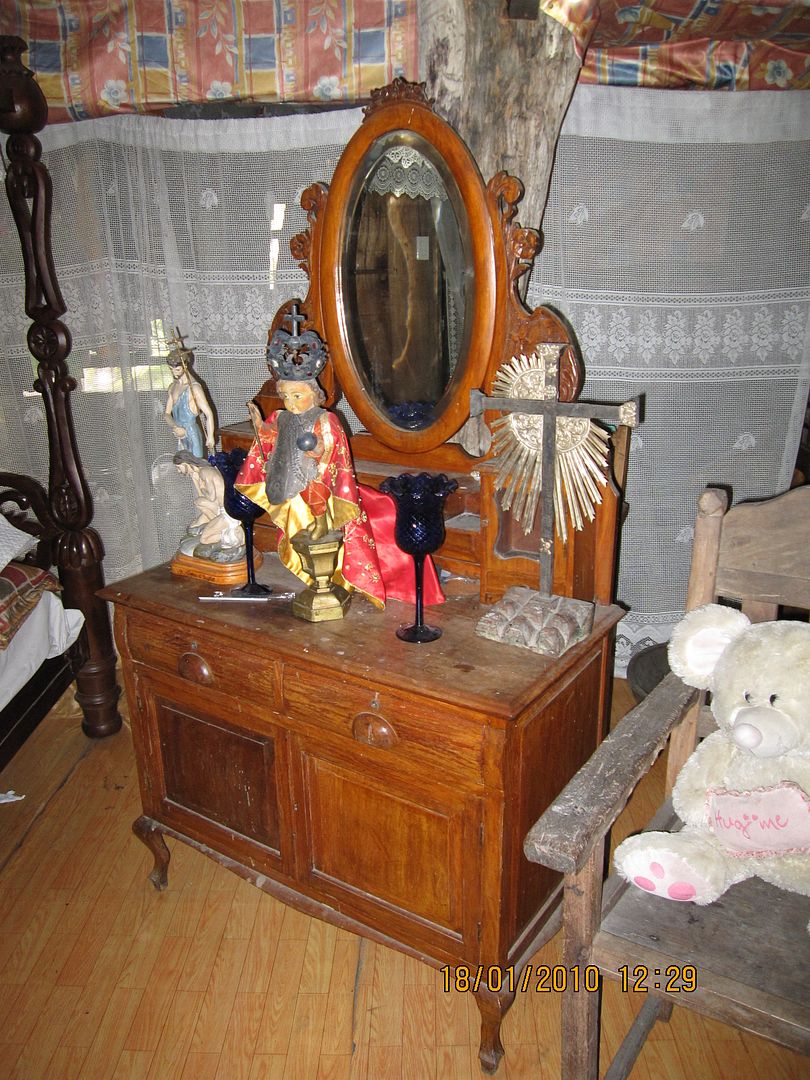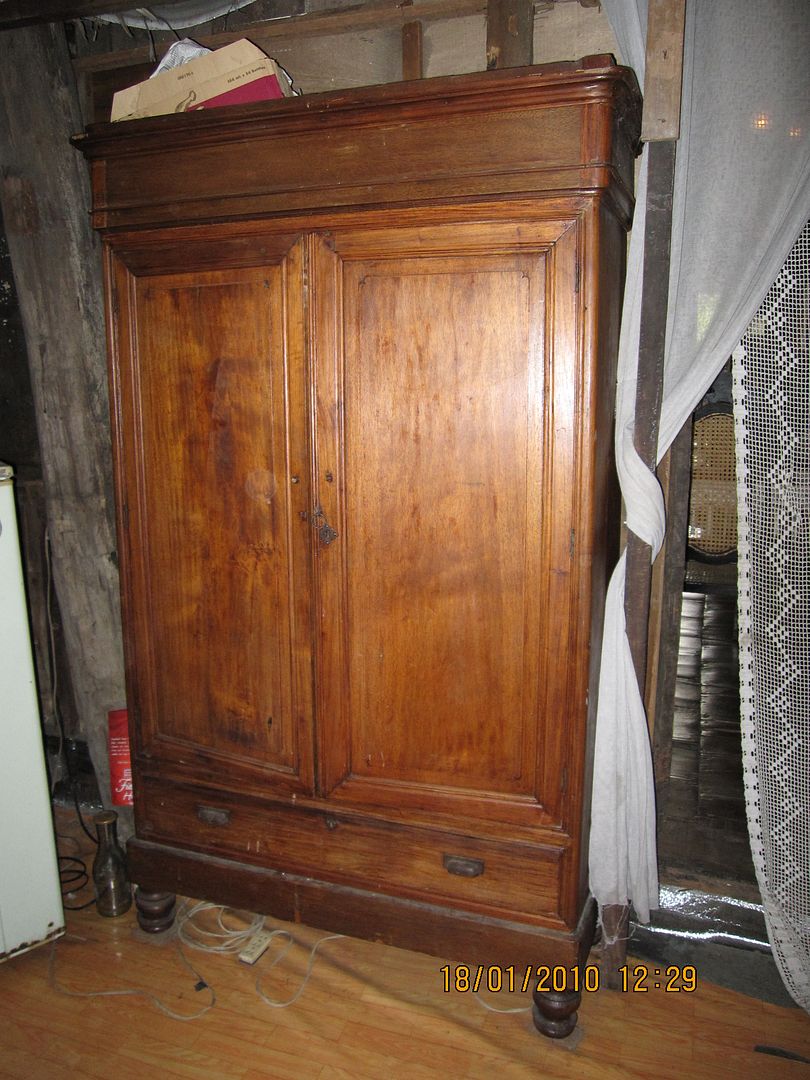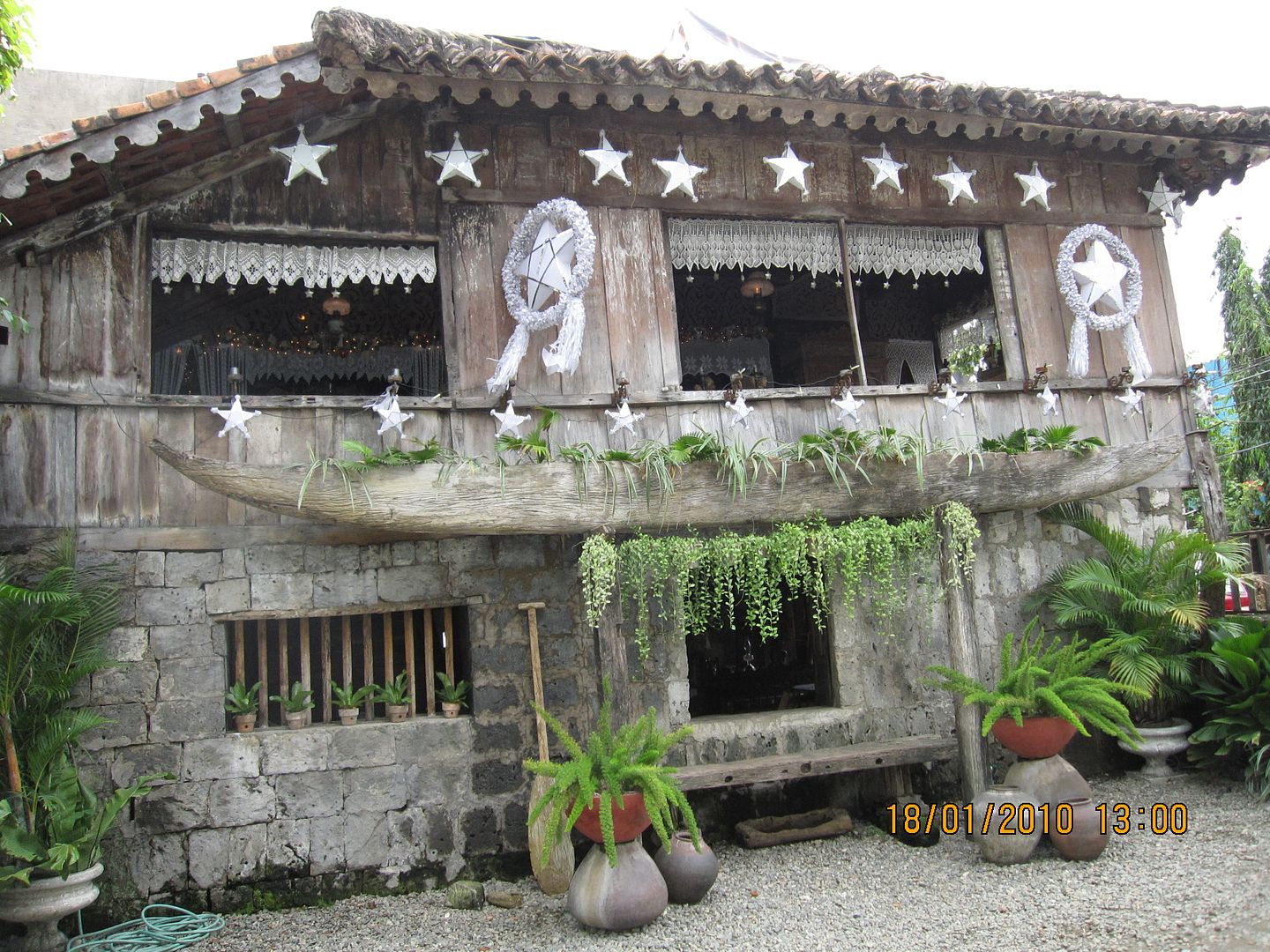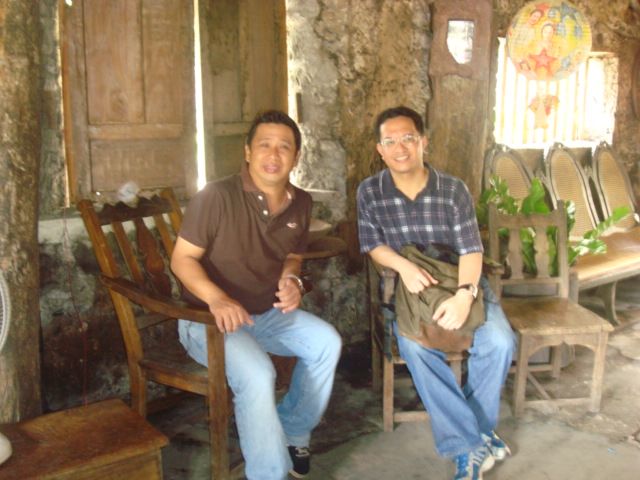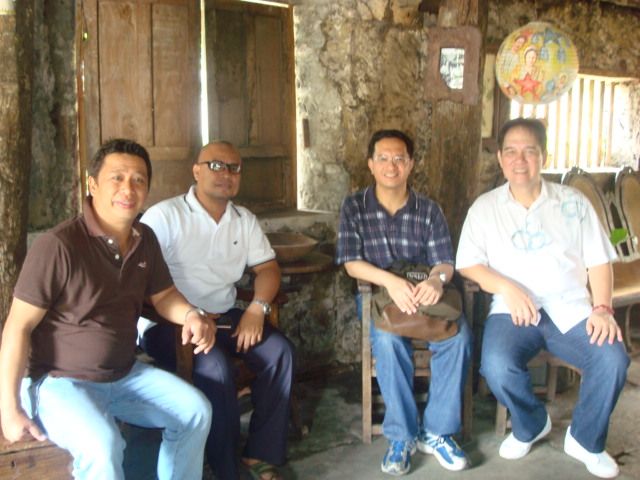We were introduced to this year’s Christmas card artist by
an old friend from Bulacan who happened to be the artist’s aunt. She was all praises for her nephew, which
made me a bit sceptical because, you know, if you can’t rely on your kin to
give you an endorsement, you’ve got other bigger problems.
I contacted the artist and asked him to send me some ideas
for Christmas-appropriate themes. In due
course, he sent me some interesting snapshots that he had done adapted into
studies, including this series on the Christ-Child in the manger:
Rather more interesting was a set of photos and studies of
children making Christmas lanterns:
It was becoming apparent to me that this artist had a
distinctive style – photorealistic, certainly, but irreverent as well. Here is his take on a famous Caravaggio
painting of “Christ at Emmaus”:
The artwork is painted on a salvaged hardwood tabletop, seen
to scale in this shot of the artist beside it:
At the time we were discussing our Christmas artwork, he was
also planning a large-scale painting on “The Women of Malolos”, inspired by the
group of young ladies made famous by Jose Rizal’s letter to them in 1889. Here is the photograph that he staged for
this project:
And one study that came out of it is this one:
He said that he had not yet begun this artwork as he had not
yet found a taker for it, possibly because its large size (eight feet wide by
four feet tall, or even larger if desired) will require a special place. So if you happen to have a large blank wall
in your home, and are game for something that will definitely be noticed by
visitors and talked about, why not go for this?
Our artist’s most famous artwork to-date (possibly now
challenged by our Christmas card) is this prize-winning masterpiece from two
years ago, “Natalo Ako”, about which more later.
Returning to our Christmas artwork, we eventually converged on the subject of children making Christmas lanterns. Here it is in production in the artist’s home workshop:
The finished artwork is our largest Christmas piece ever,
measuring four feet wide by three feet tall:
Kiko Marquez
“THREE KINGS”
Oil on canvas
36” x 48” / 91 cm x 122 cm
2015
Born in 1993, Jay Roque Aguinaldo Marquez is a native of
Hagonoy, Bulacan, and is pursuing a bachelor’s degree in Fine Arts at the
Bulacan State University in Malolos City. Despite his relative youth, Kiko is already
a prolific painter, illustrator, photographer, and layout artist. He
has participated in several group exhibitions including those at ManilART (SMX
MOA, 2012), at the Art Center (SM MegaMall, 2013), and at the Philippine
International Art Fair (SM Aura, 2014).
Kiko Marquez’s artworks might be described as “photorealism
with passion,” most famously exemplified by his grand prize-winning work,
“Natalo Ako,” for the Shell National Student Art Competition in 2013: what first
appeared to be a blown-up photograph of a freshly-harvested human heart but
upon closer examination is revealed to be a hyperrealistic image resulting from
numerous brush strokes and several layers of oil paint. In many of Kiko’s works, photorealism is also
combined with what might be thought of as “controlled whimsy,” as in the
carefully-positioned doodles in this Christmas-themed artwork, “Three
Kings.”
Contact Kiko Marquez
and view his other artworks via his Facebook page: https://www.facebook.com/jhaypixelated
And so, from Kiko via me and my family,
Merry
Christmas and a Happy New Year!
Maligayang
Pasko at Manigong Bagong Taon!Originally published on 3 January 2016. All text and photos (except where attributed otherwise) copyright ©2016 Leo D Cloma. The moral right of Leo D Cloma to be identified as the author of this work has been asserted.
